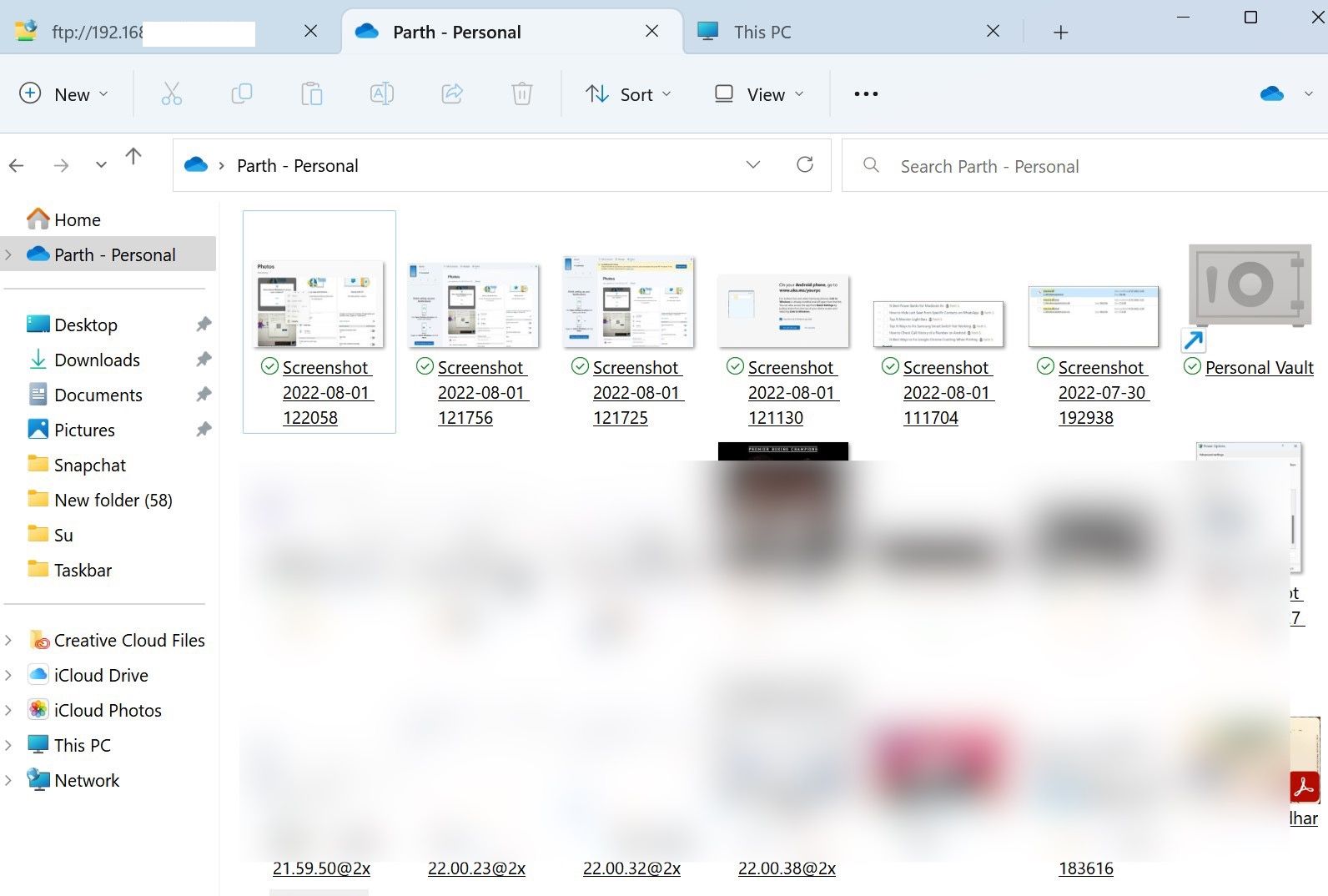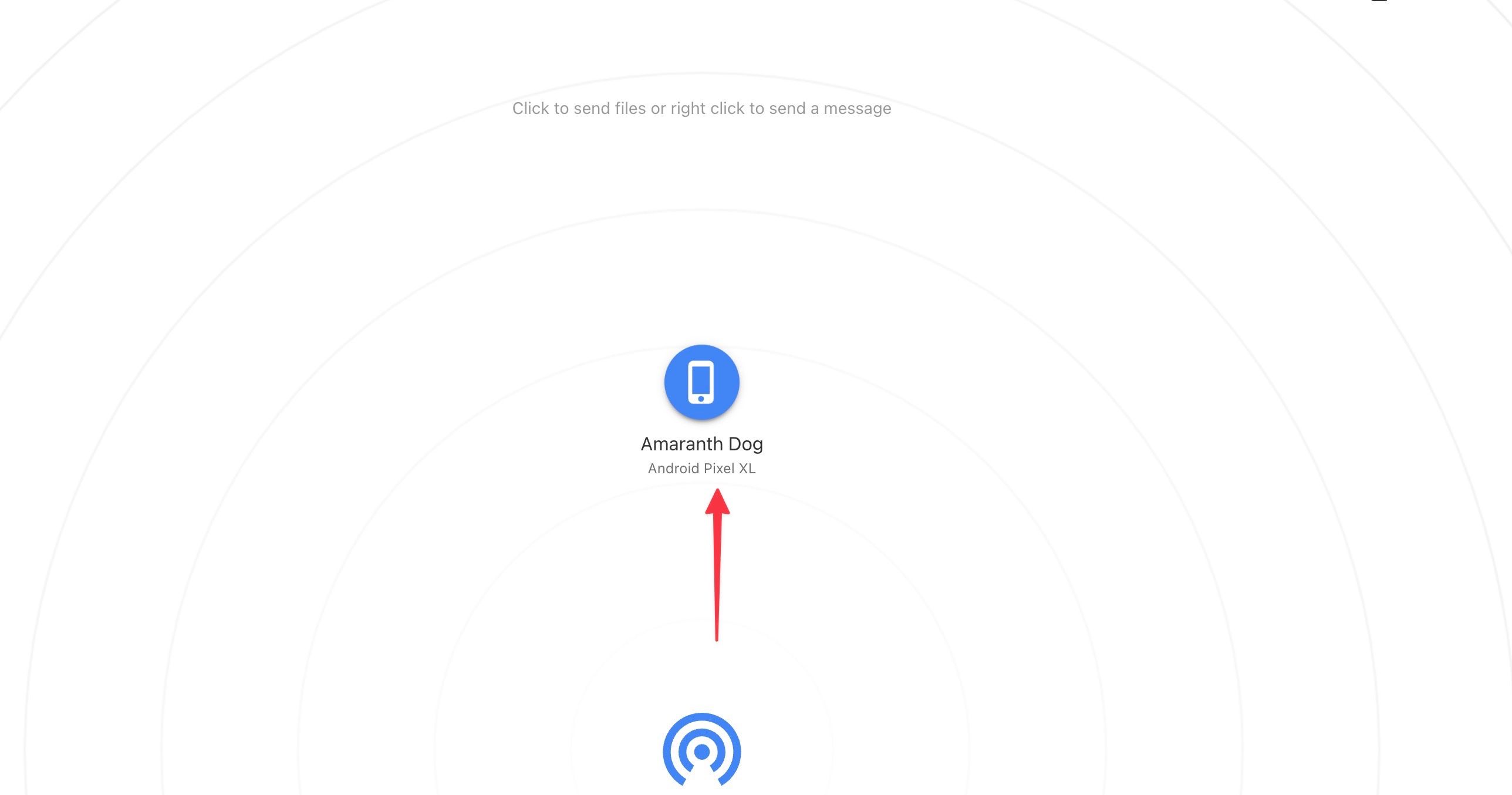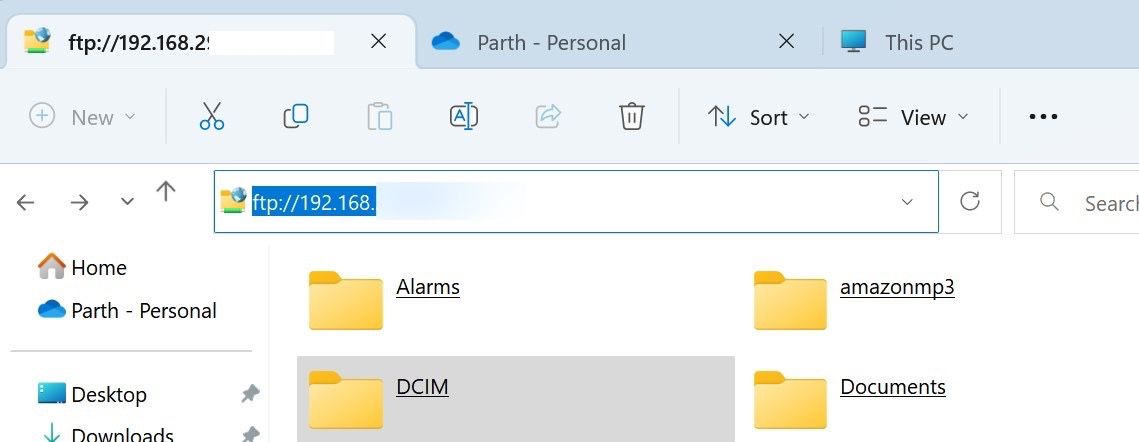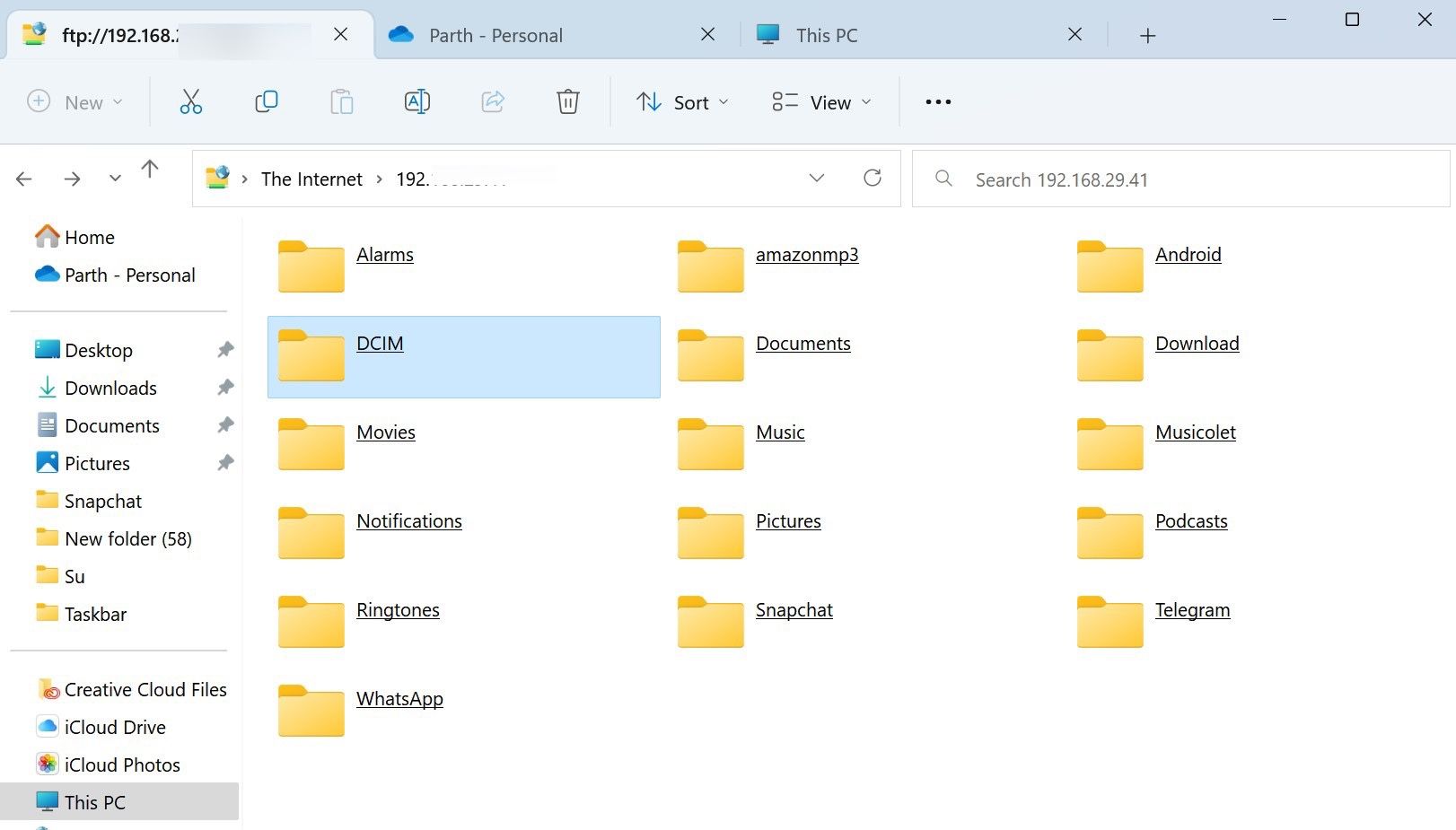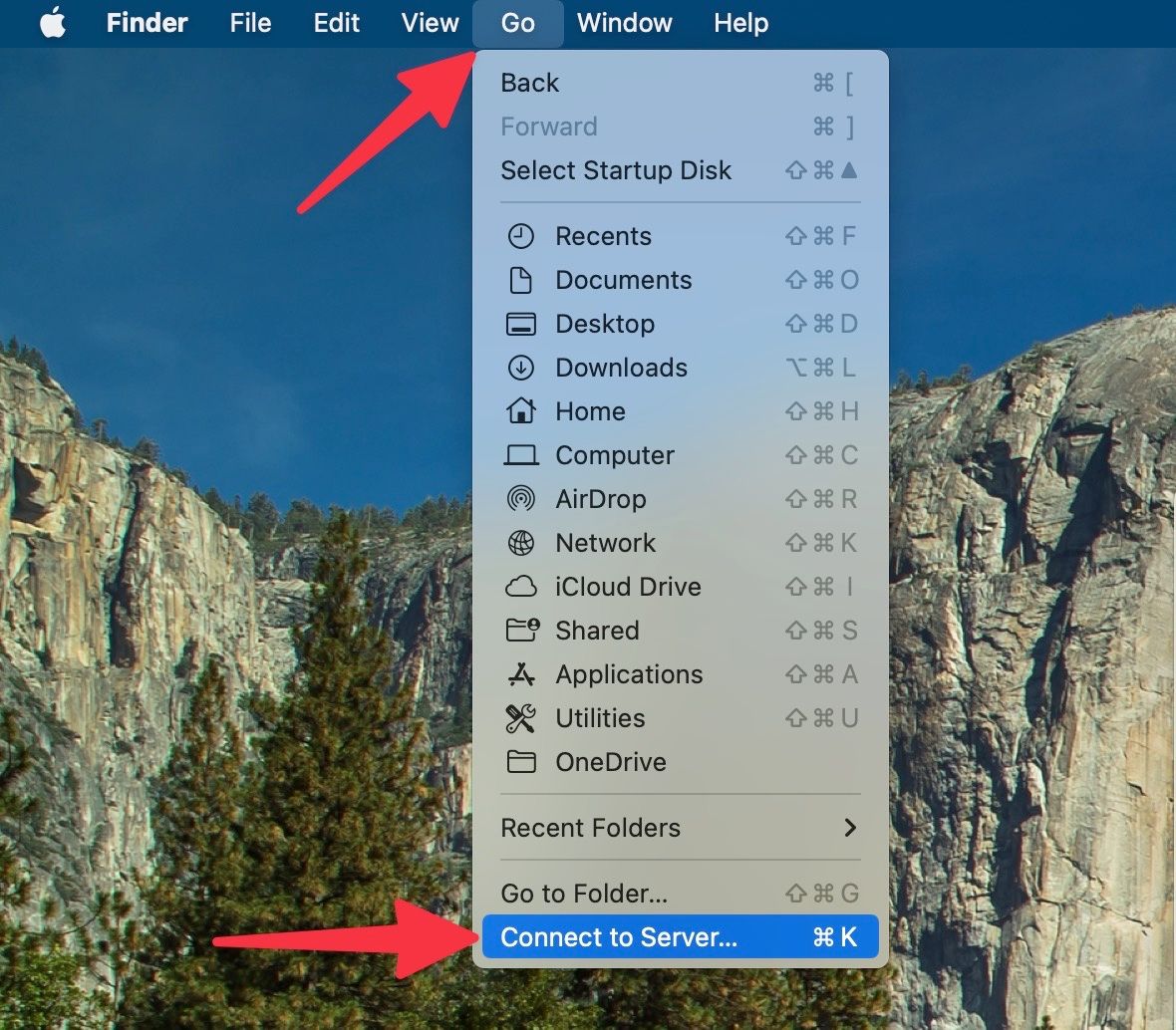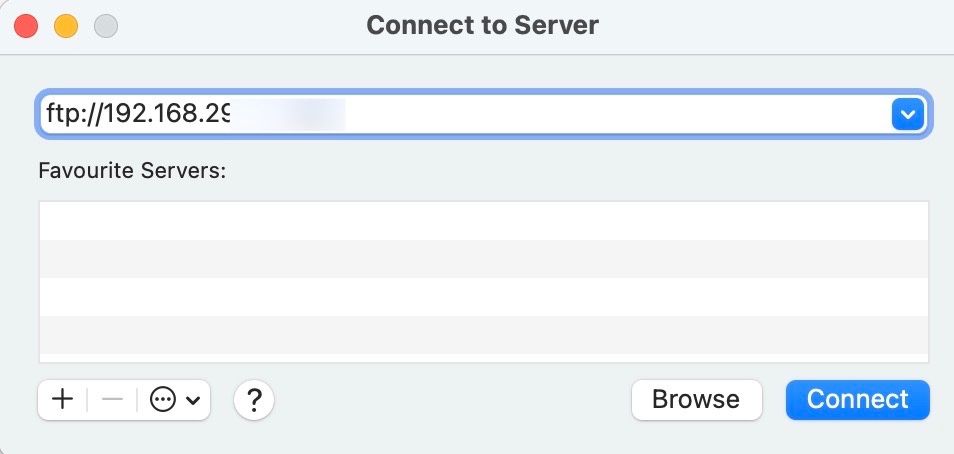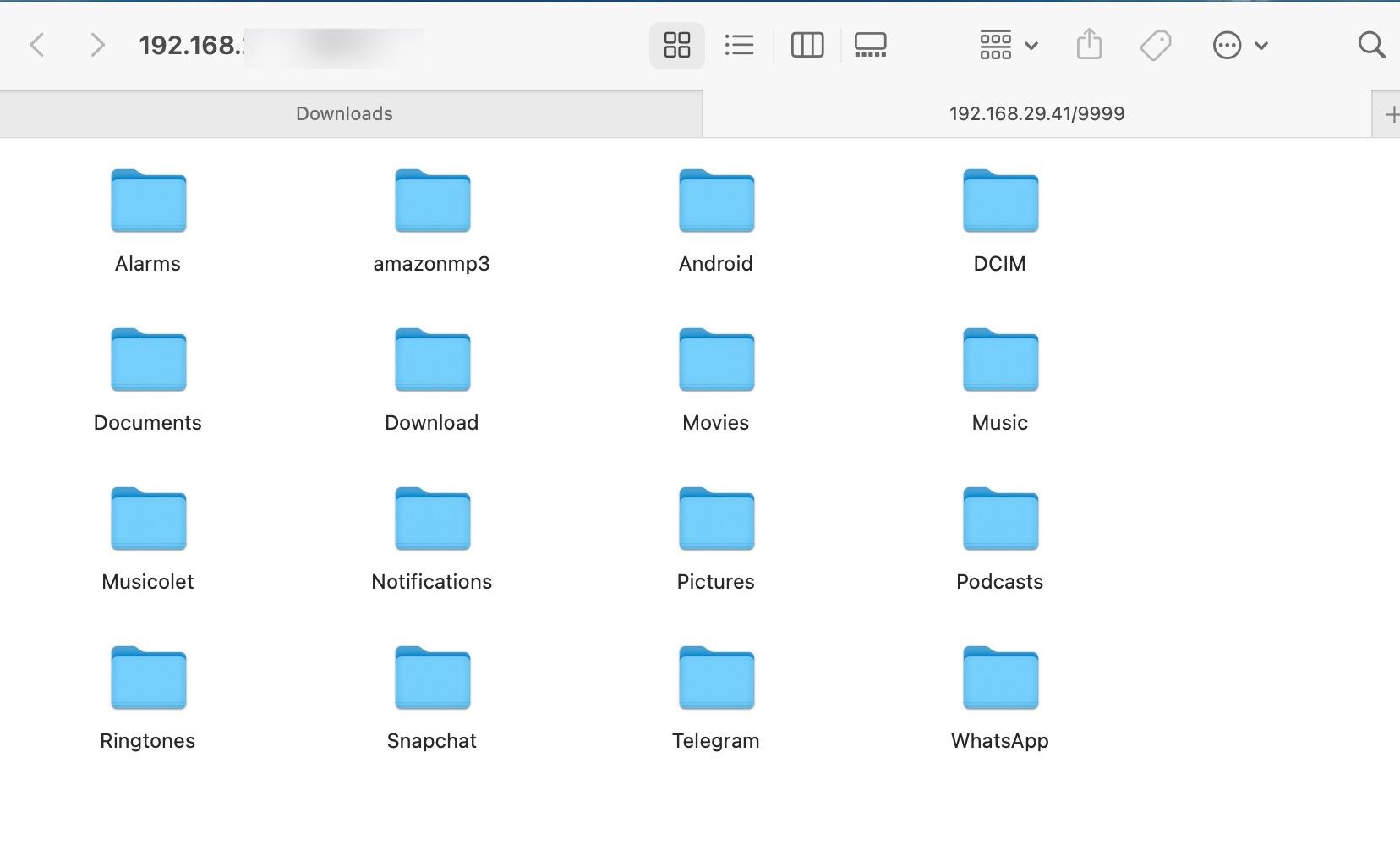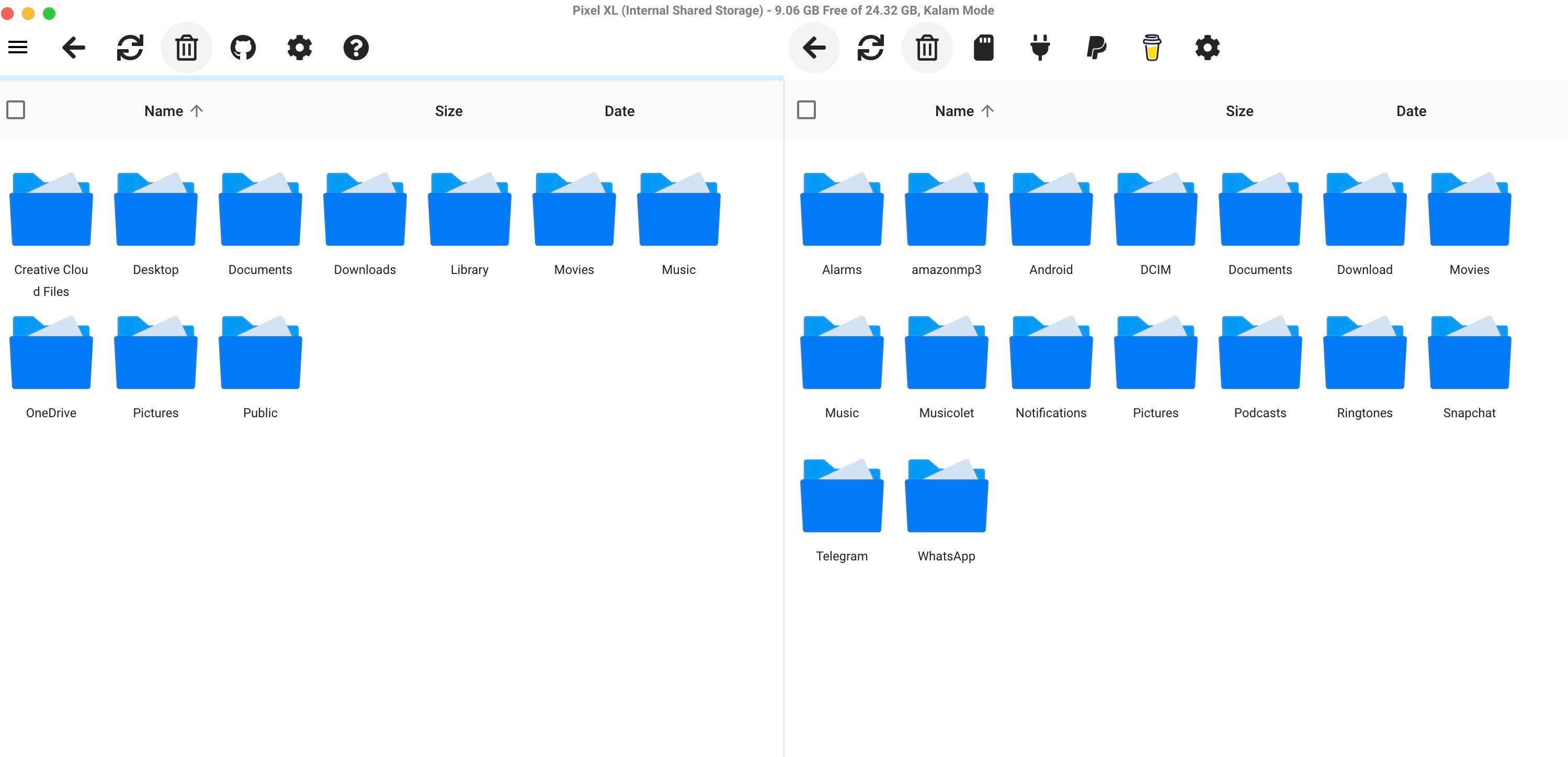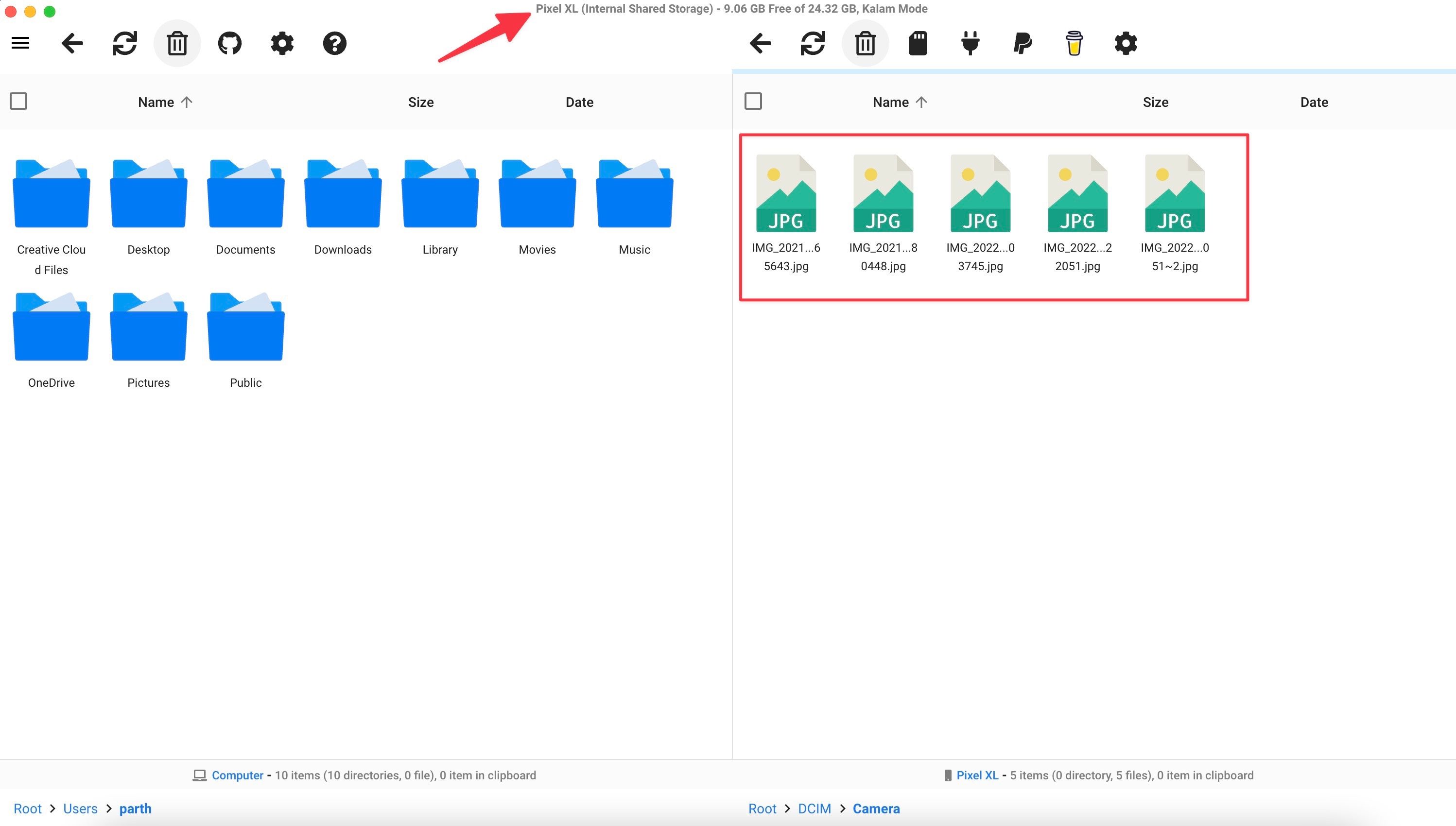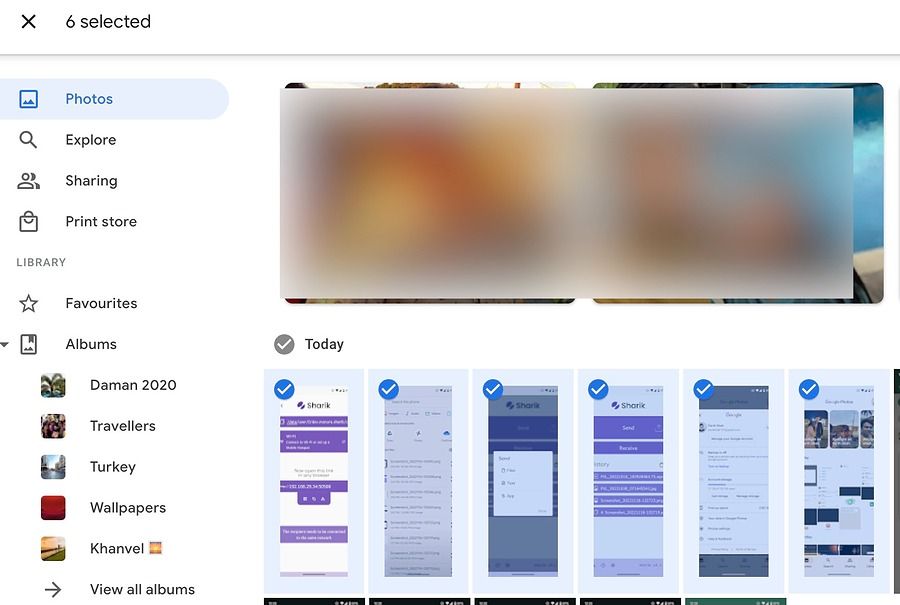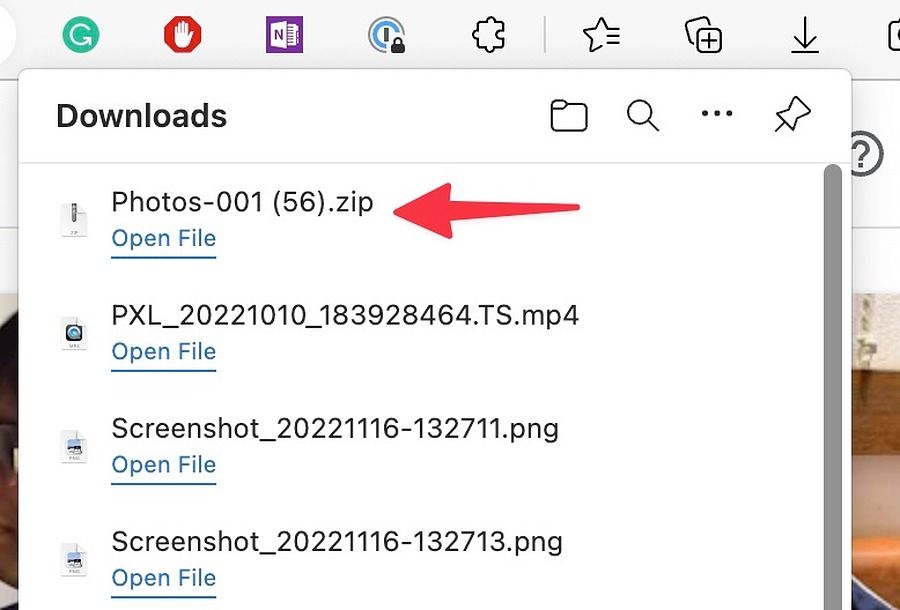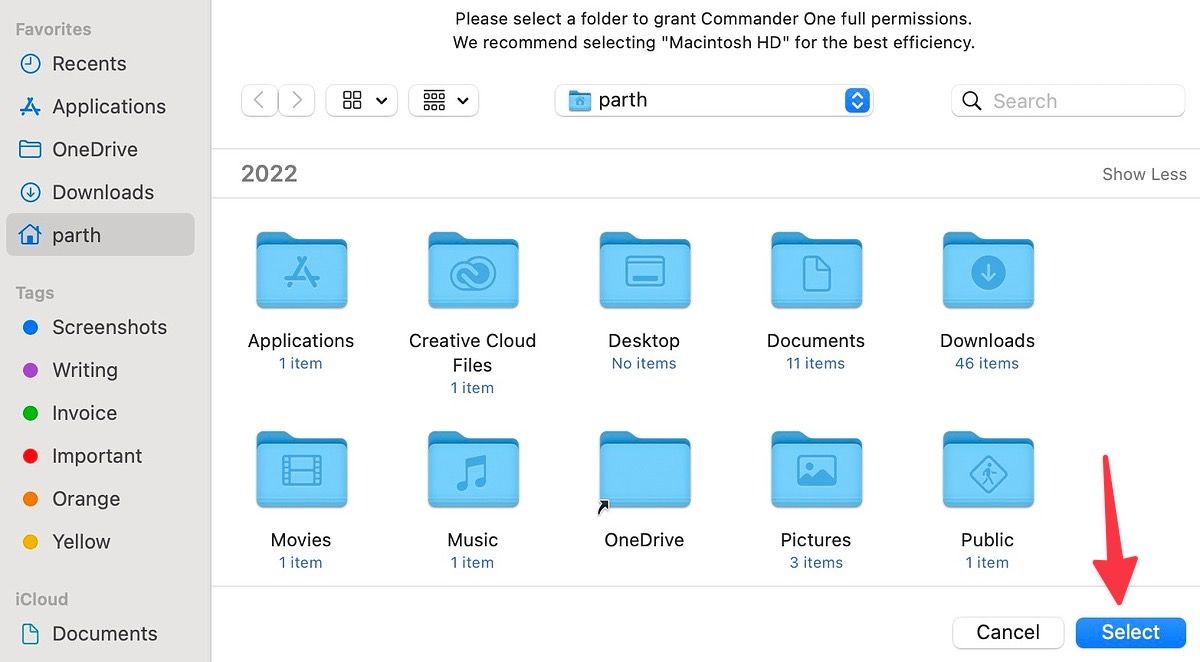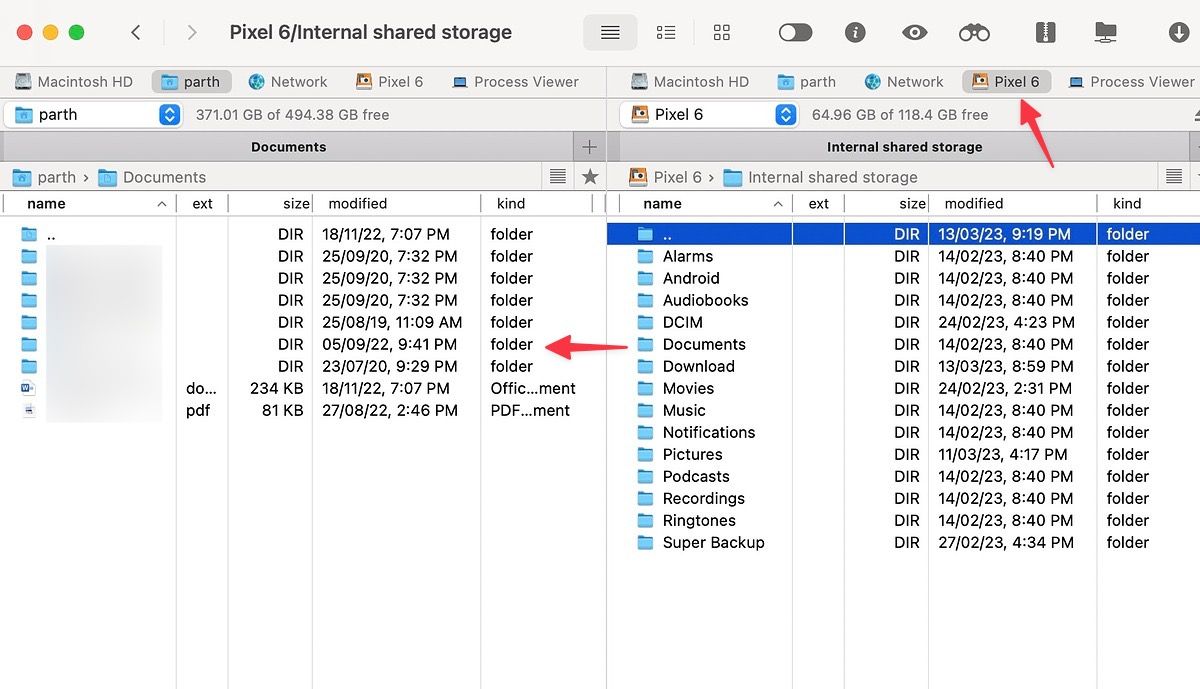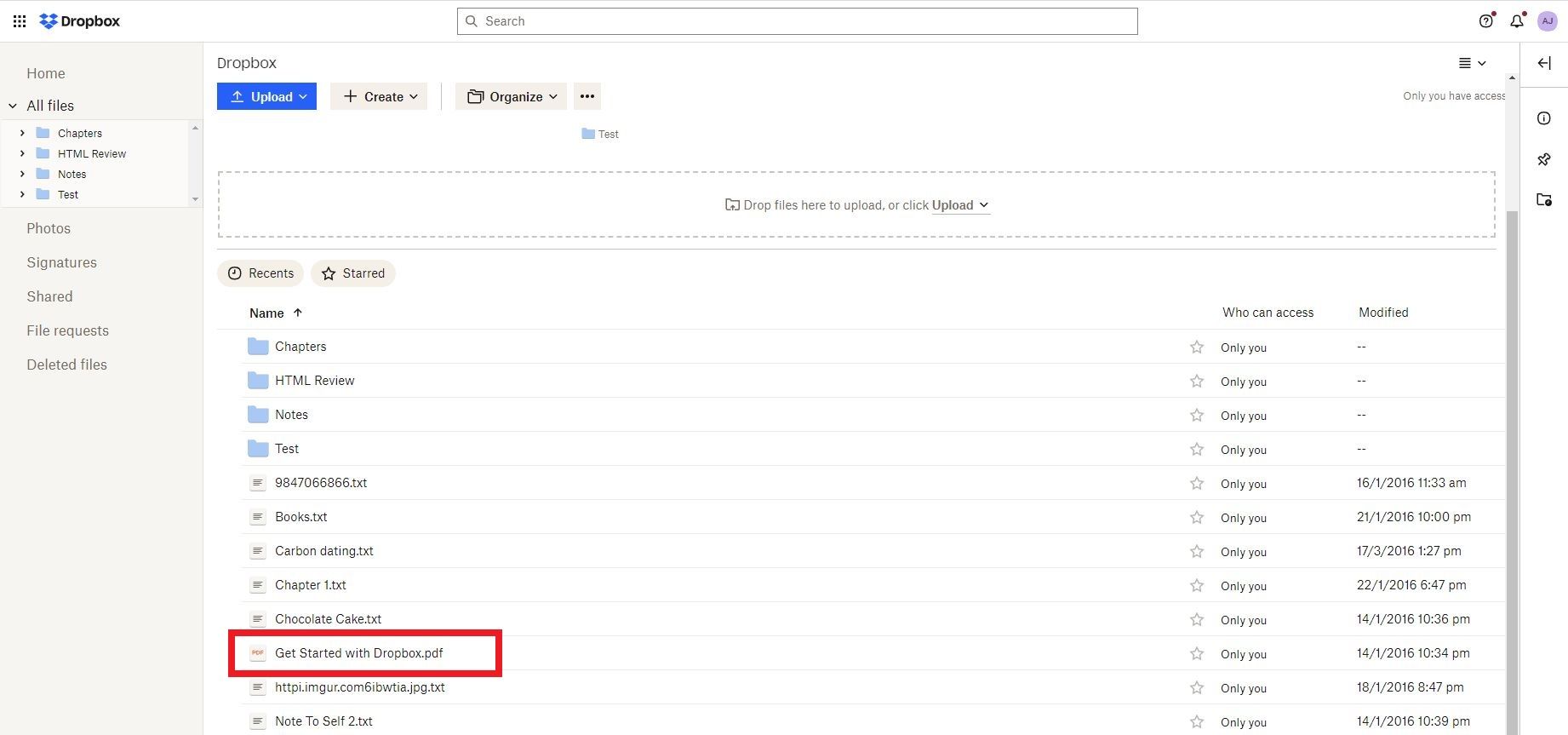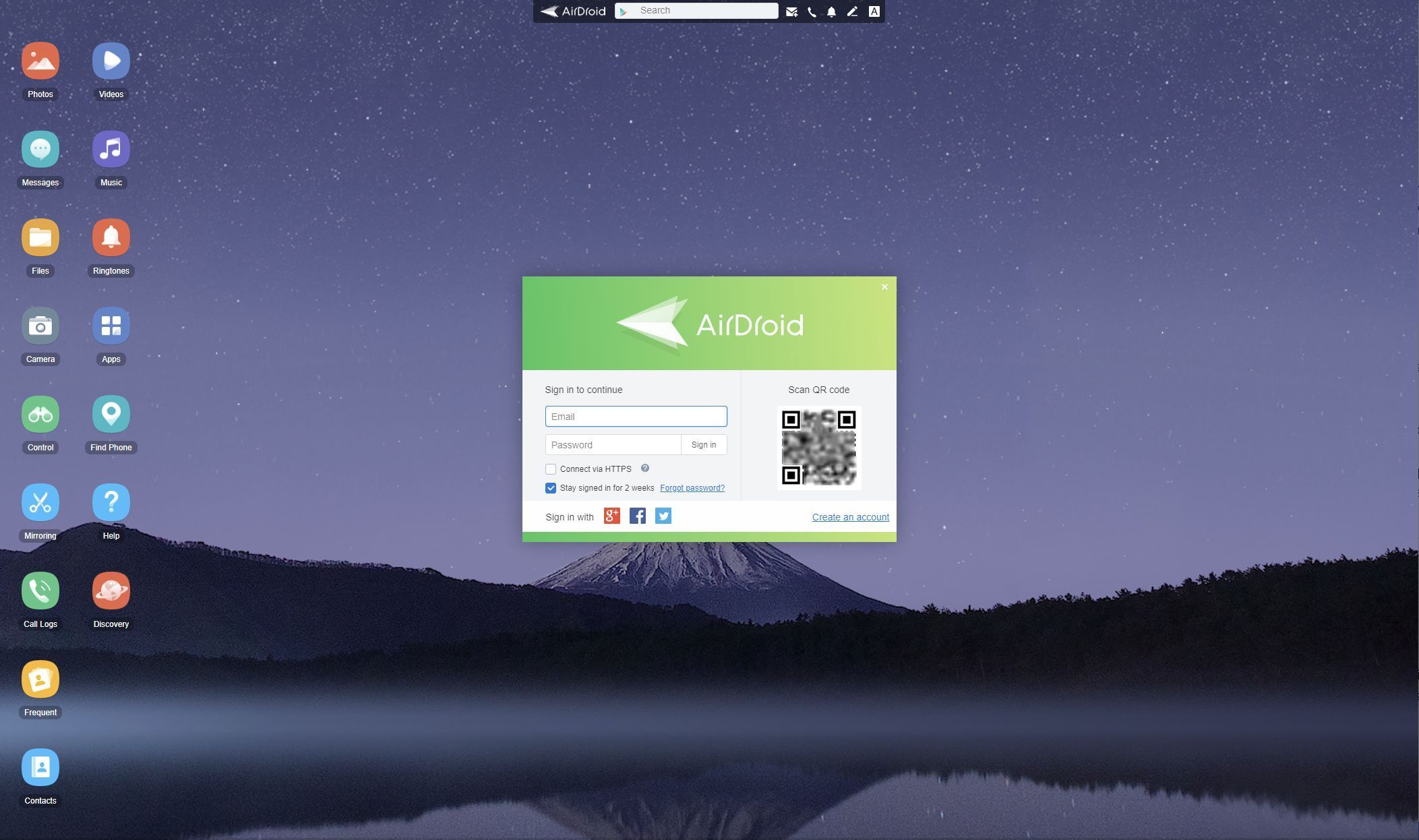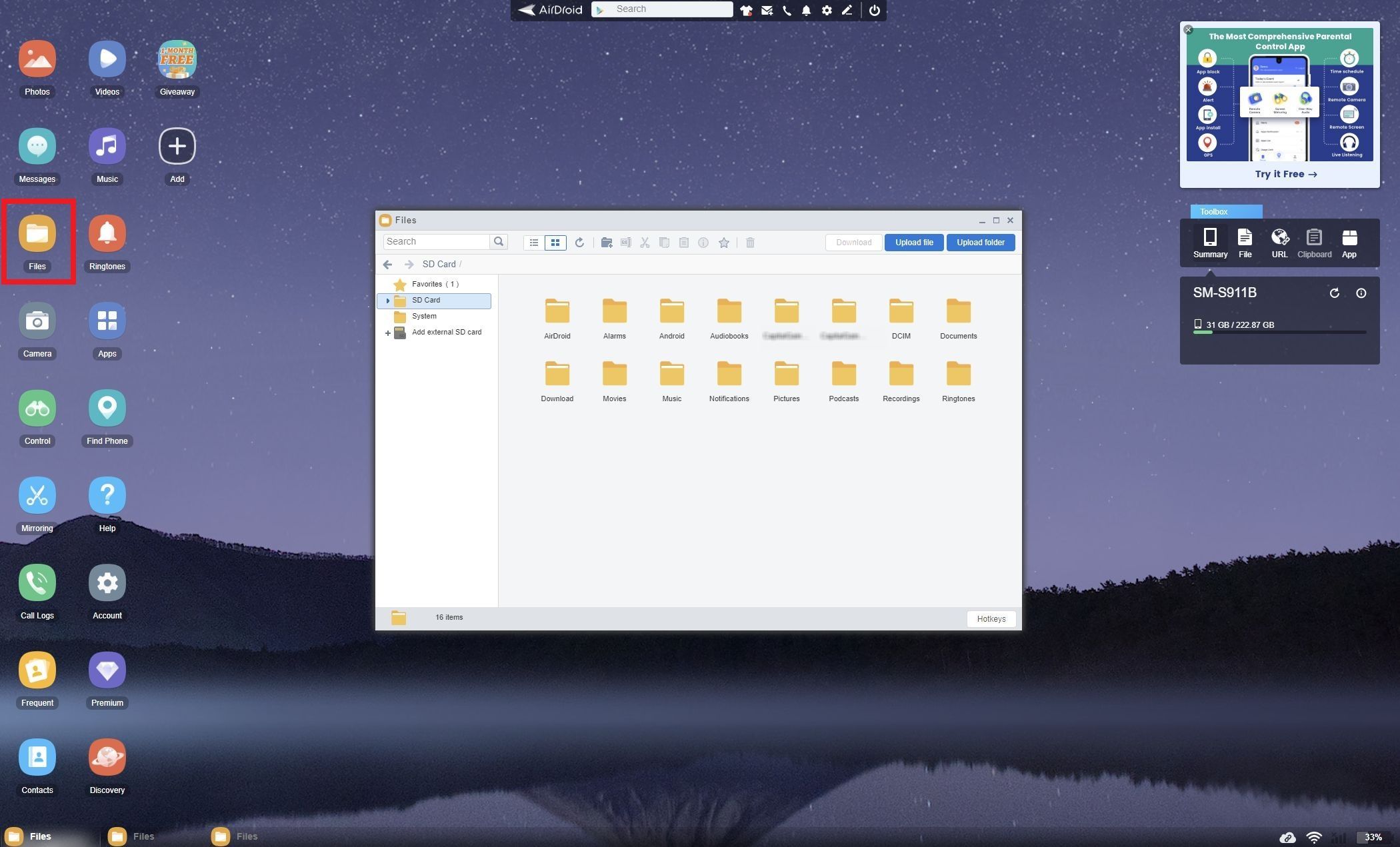Although the top Android phones have a minimum of 128GB of storage, it may not be sufficient for everyone. You may need to back up photos to free up storage space or move the music you downloaded on your phone to your desktop. Because of Android's open and transparent nature, there are many ways to do it. You can use a USB cable, Bluetooth, a third-party app, or a local wireless connection.
With so many options, it isn't always clear which one you choose. Here are 15 easy ways to transfer files from an Android phone to a Windows PC or a Mac.
Transfer files with a USB cable
Using the USB cable that came with your smartphone is the easiest way to connect and transfer files to your computer. You may need a different one if your phone has the newer USB Type-C-to-Type-C cable and your desktop or laptop doesn't have a USB-C port. However, if this isn't an issue, the bundled charging cable is all you need to move files between the two devices.
The transfer speed depends on the type of cable and storage you have on both devices. For example, the transfer speed is slower if your phone uses eMMC storage but faster if it comes with UFS. Transferring files to a SATA drive on a PC takes longer than an SSD.
Use a USB cable to transfer files to Windows
If you're transferring files to a Windows PC, it couldn't be easier.
1. Connect your phone and PC using the USB cable.
2. You'll see a notification or pop-up on your phone where you can choose a USB preference. Select the radio button beside File transfer / Android Auto.
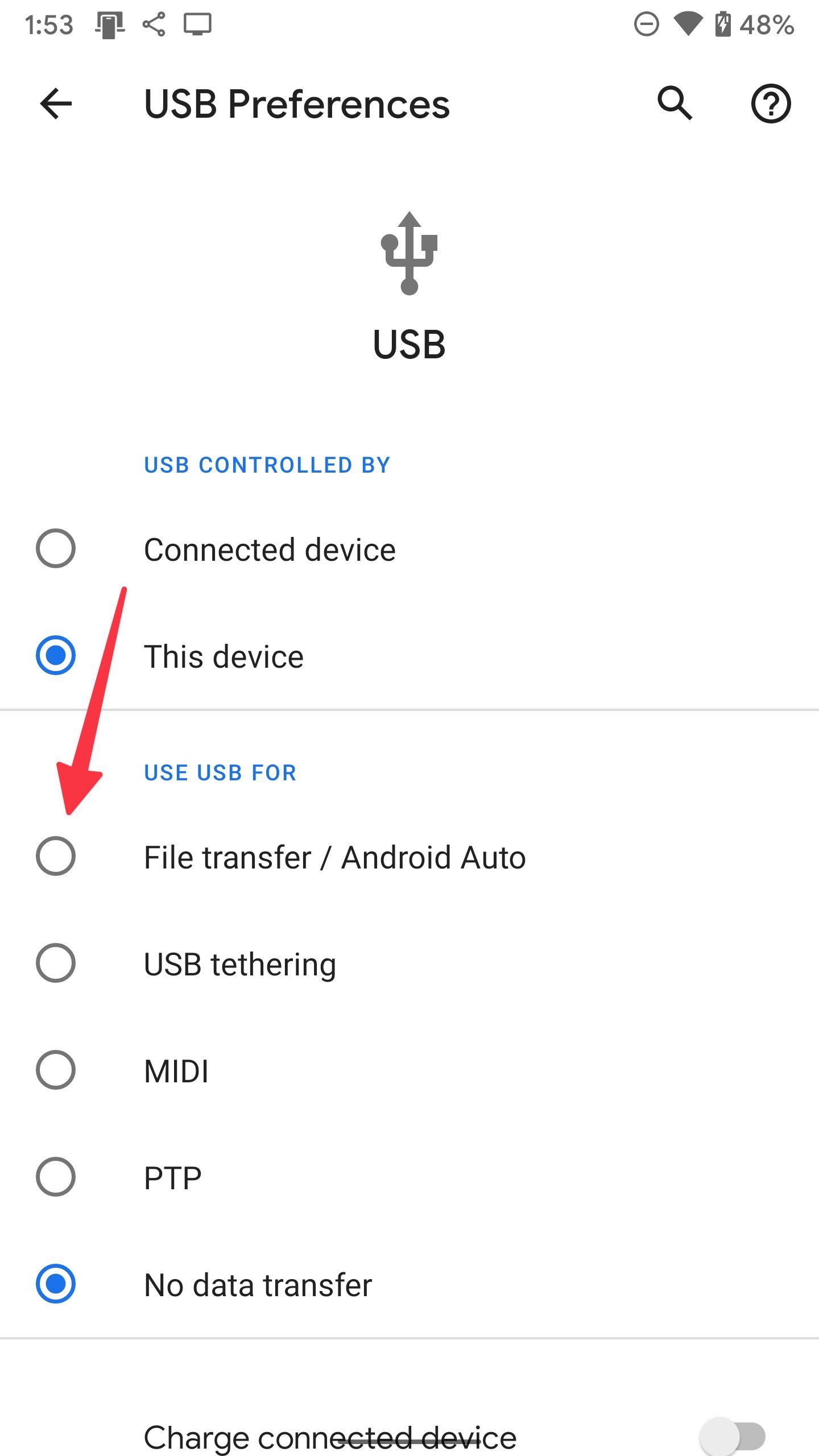
3. A file transfer window opens on your PC, or you may need to navigate to This PC via File Explorer and find the folder named after your phone.
4. From here, browse the contents of your phone and drag files to a folder on your PC. Photos are usually in the Camera > DCIM folder, while downloaded files are in the Downloads folder.
5. Or, select and copy one or more files, then paste them into the desired folder on your PC.
Use a USB cable to move files to a Mac
Using a USB cable to transfer files to a Mac is not as straightforward. You'll first install the official Android File Transfer app on your Mac. After you've done that, the steps are simple.
1. Connect your phone and Mac with a USB cable.
2. Select File transfer / Android Auto from the USB preferences notification or pop-up.

3. Open the Android File Transfer app (if it doesn't open automatically).
4. Browse your phone's contents and drag files to a Finder window to transfer.
Transfer files from your phone to your computer using Bluetooth
Use Bluetooth to transfer files if you don't have a USB cable. The transfer speeds are slow, so use this method when transferring smaller sizes. A single attachment or a photo from your gallery should be fine, but we don't recommend using Bluetooth for a long video or a large album of photos.
1. Turn on Bluetooth on your phone and PC or Mac. Activate it on Android from Quick Settings by pulling down the notification shade. Look for the Bluetooth icon on the status bar or control center on Mac and Windows.
2. On your Windows PC or Mac, search for available devices. Select your phone to pair with it.
3. The system asks you to accept the connection by checking a pin that matches on both devices.
4. If you're on a Mac, there's an additional step. Go to System Preferences > Sharing and check Bluetooth Sharing to turn it on.
5. Locate the file or photo on your phone that you want to transfer. Tap the Share icon, then select Bluetooth.
.png)
6. On a PC, right-click the Bluetooth icon on your Taskbar and click Receive a File.
7. Select the device you're sharing from, and the file is sent to your Documents folder. On a Mac, the file is sent to the Downloads folder.
Windows users can transfer files with Microsoft Phone Link
If you want to transfer several photos from your phone to your Windows PC, Microsoft's Phone Link app (formerly known as Your Phone) is a fantastic tool. While Your Phone was limited to Samsung Galaxy phones, the rebranded app is compatible with all phones running Android OS 7.0 or later.
1. Install the Link to Windows app on your phone. The Phone Link app is pre-installed on newer versions of Windows. You can grab it here if it's not there.
2. Open the Phone Link app on Windows and connect your Android phone via the QR code. Allow the necessary permissions to the Link to Windows Android app.
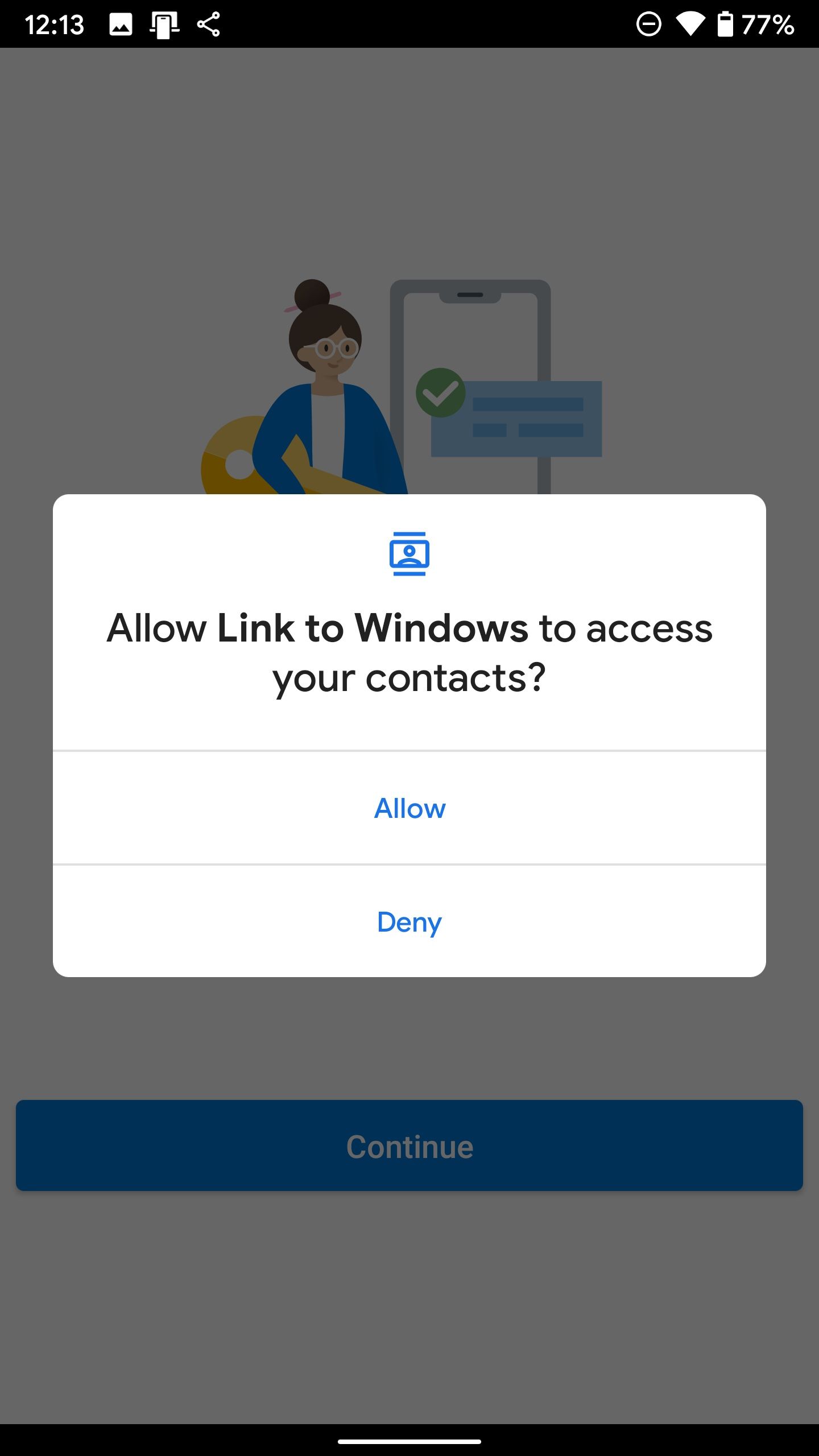
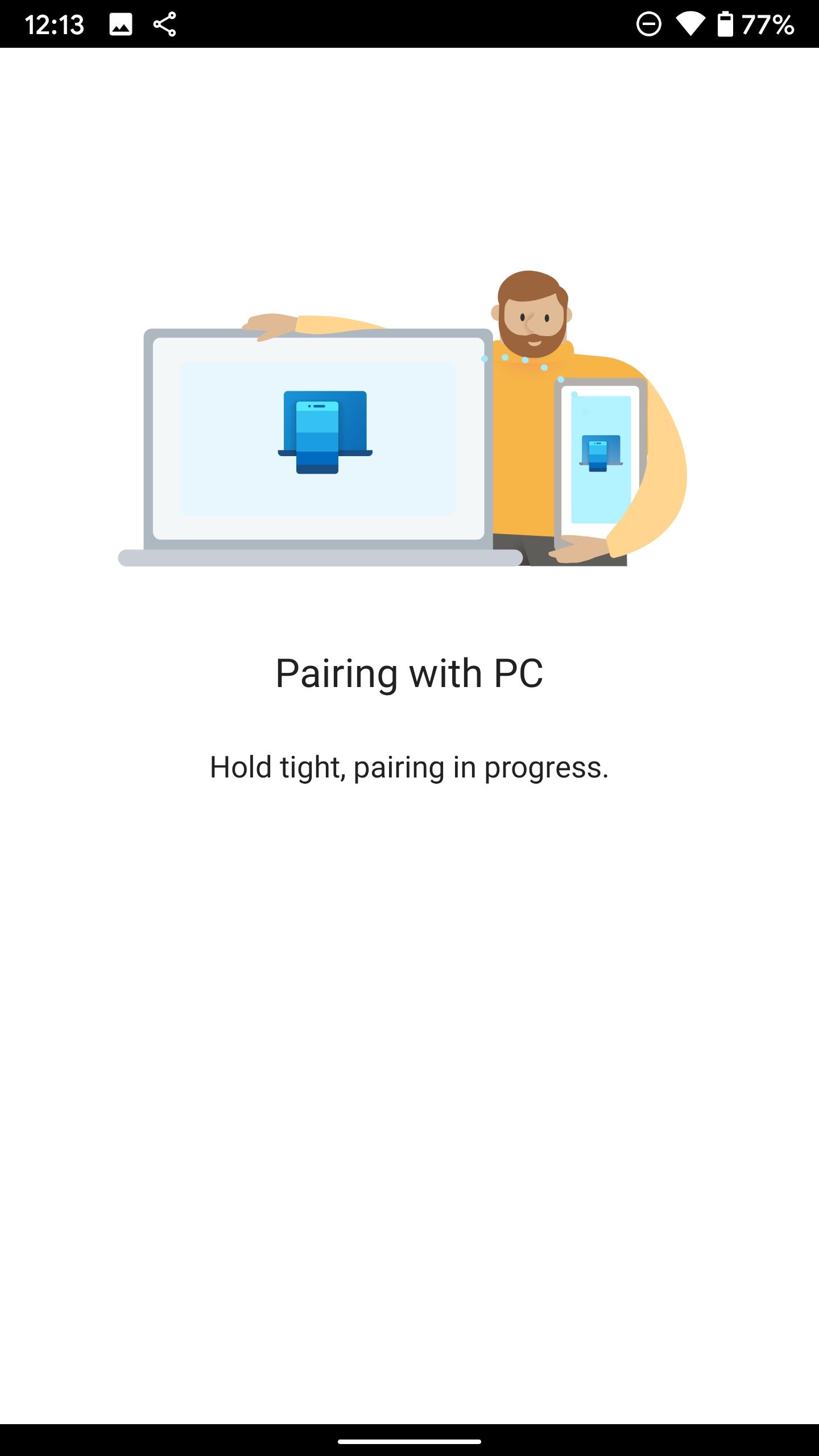
3. After pairing your phone to your PC using the app, transferring images is as easy as dragging and dropping the files.
4. Drag photos from the Phone Link app to the desktop or right-click an image and select Save as from the context menu.
5. Select the folder on your PC to export the image.
Microsoft's Phone Link can do more than transfer files. Use it to mirror your notifications, make calls, and more. Check out our guide to the powerful Phone Link app.
Nearby Share on Windows is another file transfer option
Google offers Nearby Share on Windows. It transfers files from your Android phone or tablet to a Windows PC.
1. Download Nearby Share from Google on Windows.
2. Launch Nearby Share on your PC and sign in with your Google account details.
3. Enter your PC name and select Receive from everyone.
4. Launch the default gallery app on your Android phone. Select the photos you want to transfer.
5. Tap the share icon and select Nearby Share.
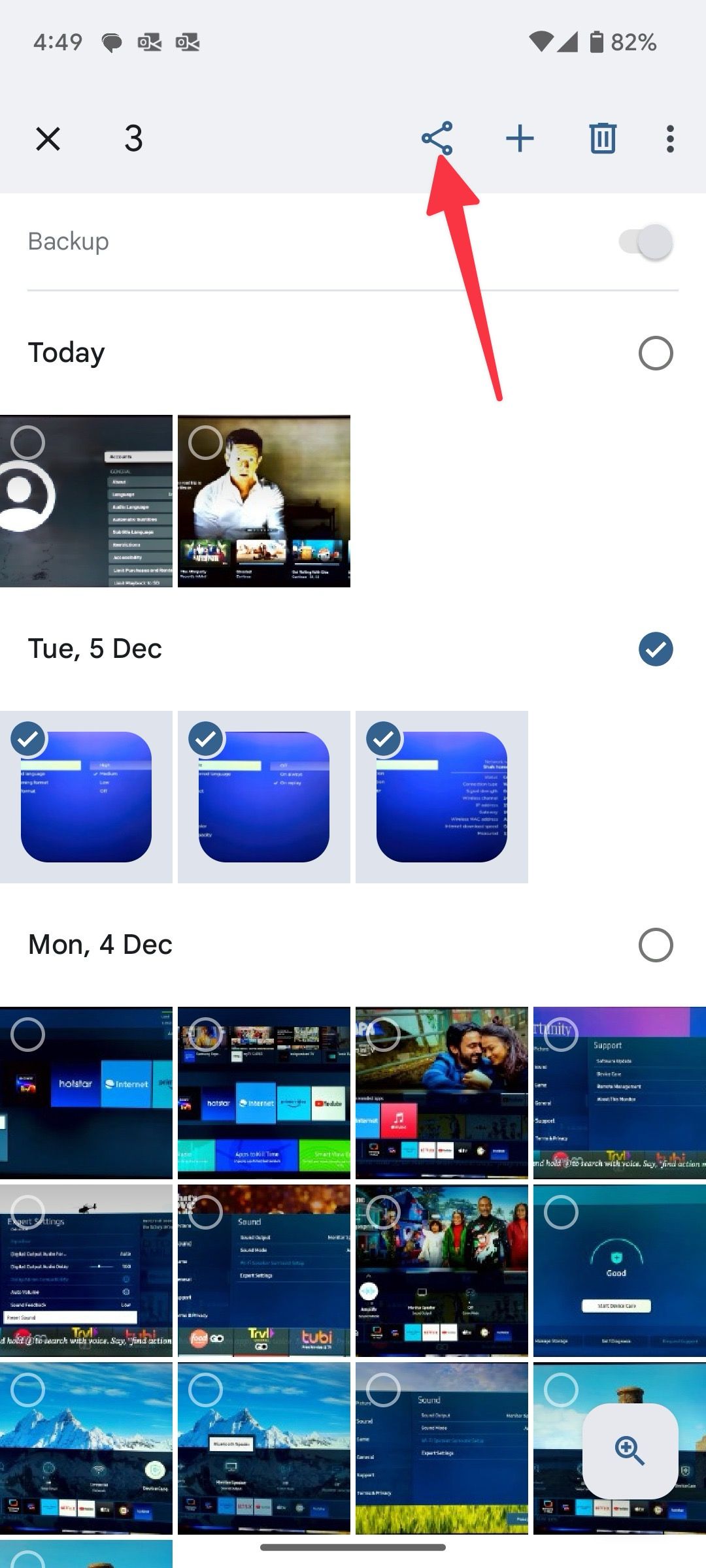
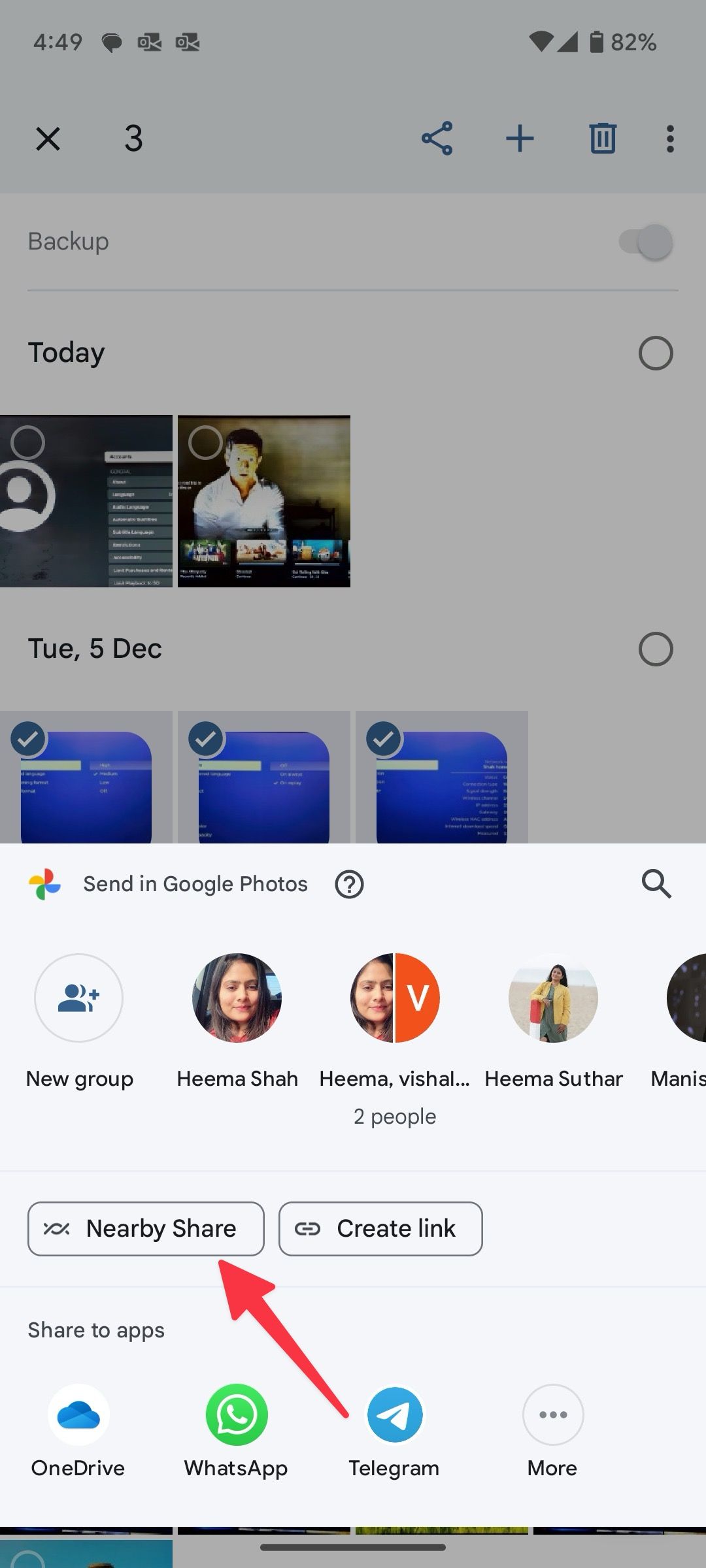
6. Find your PC on the list and tap it.
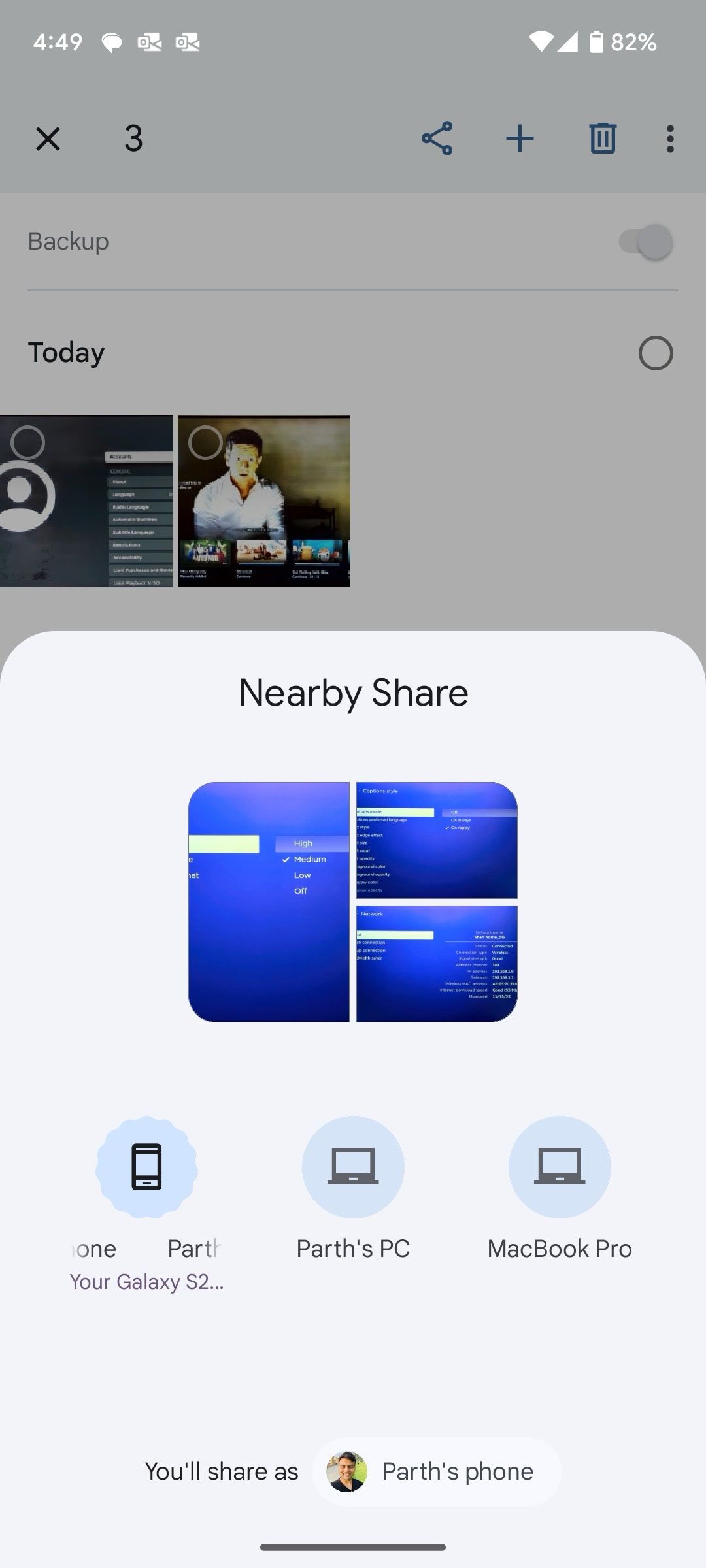
7. Android transfers your photos and videos to the PC quickly.
By default, Nearby Share saves your media files to the Downloads menu in the File Explorer app. Select the settings gear at the top and change the destination folder.
Try NearDrop on Mac for file transfers
Google doesn't offer a Nearby Share client on Mac. You must use a third-party alternative like NearDrop on Mac to receive files from your Android phone. Let's check it in action.
2. Double-click the NearDrop file and install it on your Mac. macOS may block the app for security reasons. You need to make a setting tweak.
3. Open System Settings on Mac and scroll to Privacy & Security.
4. Click the radio button beside App Store and identified developers. You may also see the system blocking the NearDrop app. Click Open Anyway.
5. Launch NearDrop and check the app icon appearing on the Mac menu bar.
6. Open Google Photos on Android and select photos and videos. Tap the Share icon and tap Nearby Share.


7. Check your MacBook with a PIN. Tap it.
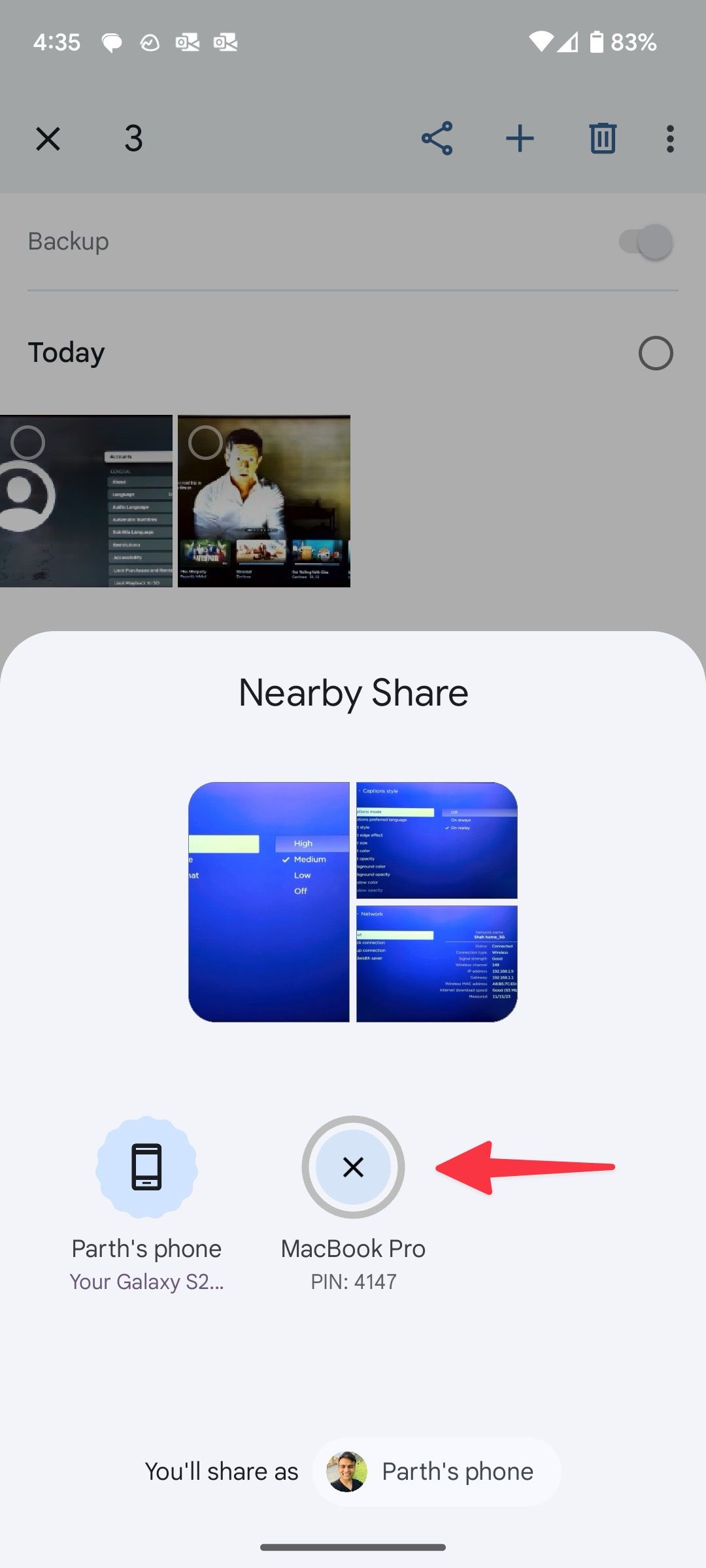
8. You'll receive a notification from NearDrop on Mac. Confirm the same PIN. Expand Options and select Accept.
9. Your sent photos and videos appear in the Finder menu on Mac.
ShareDrop is an open source option for Windows and Mac
ShareDrop is a free, open source web app to transfer files from your Android phone to your Windows PC or Mac and vice versa. You don't need to install an app on either device. The solution is web-based and uses an encrypted peer-to-peer connection. The software uses WebRTC (Web Real-Time Communication) technology to complete the transfer process.
Make sure your phone and Windows PC or Mac are connected to the same network and follow the steps below.
1. Visit ShareDrop on your preferred desktop browser.
2. Click + in the upper-right corner.
3. Copy the web address and open the same on your Android phone. You can also scan the QR code using your Android device.
4. Your phone opens ShareDrop in the default browser. Select your avatar.
5. Tap Files.
6. Select the images and videos you want to send. Tap Send.
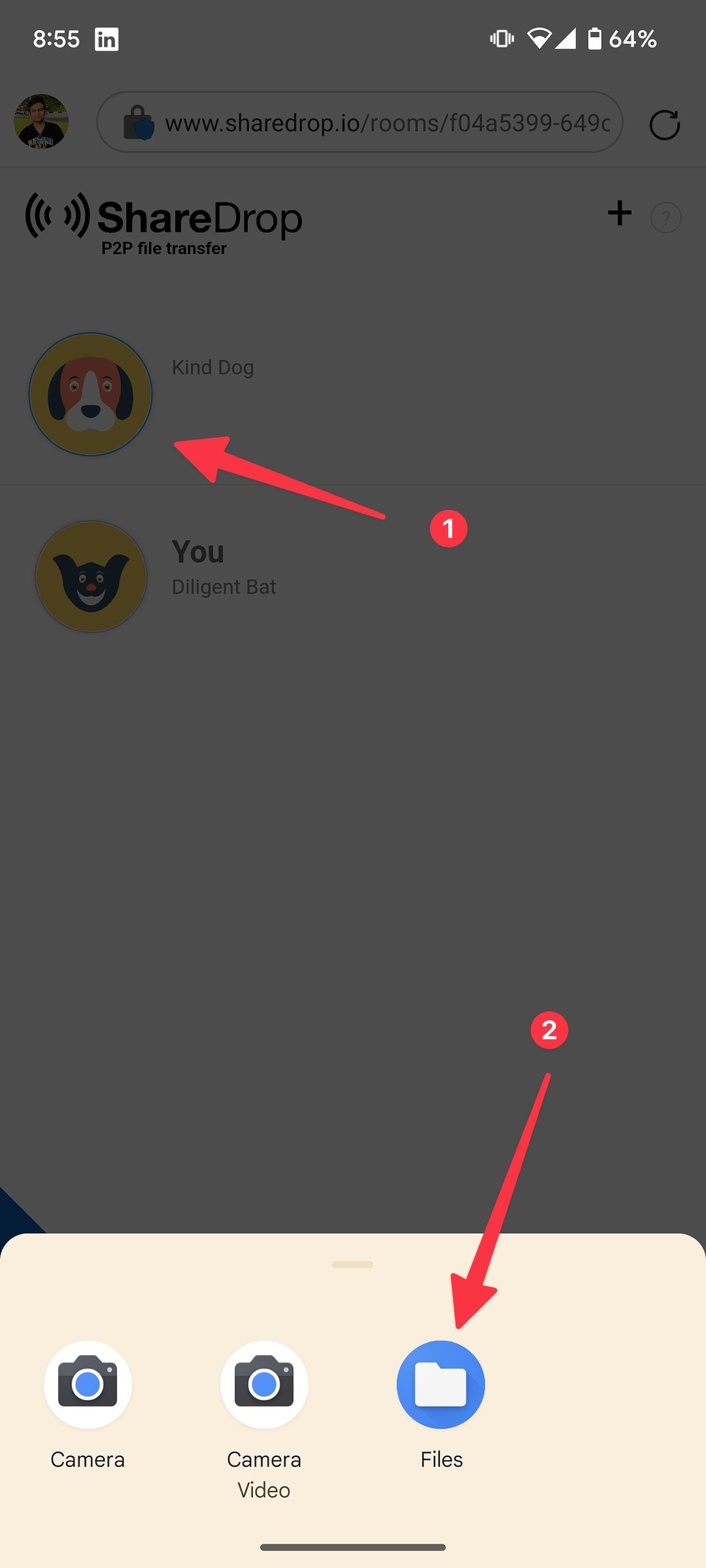
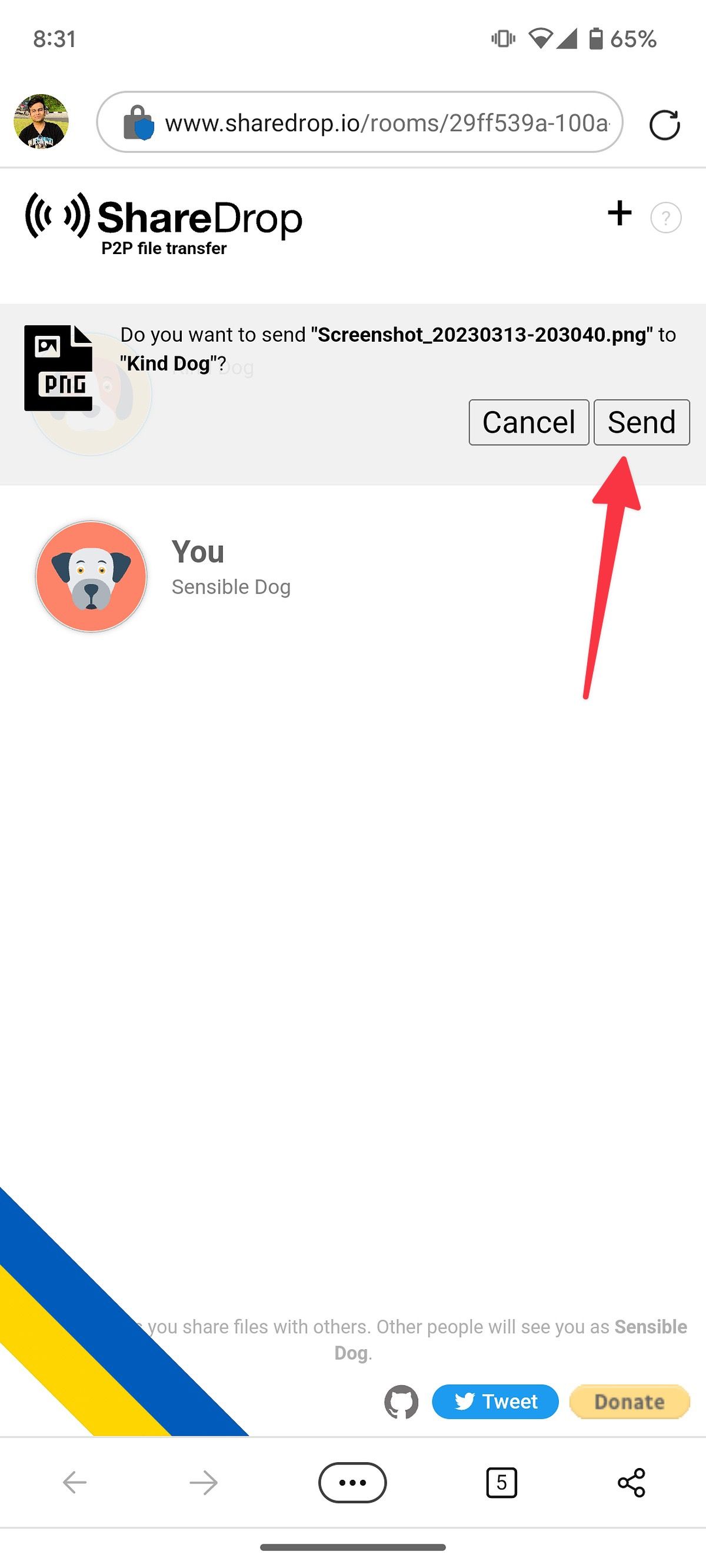
7. ShareDrop on the desktop asks you to save files. Tap Save.
8. Use the File Explorer (Windows) or Finder (Mac) app to find your downloaded files.
Google Drive is another easy way to transfer files from you phone to computer
Another easy option for sharing files is via the cloud. The Google account you used to set up your Android phone comes with 15GB of Google Drive storage. It's accessible on a Windows PC or Mac, allowing you to send multiple files simultaneously. Google Drive is available to every Android user. Follow the steps below to use it.
1. Open the Google Drive app on your Android device.
2. Click on the + button in the lower-right corner, and tap Upload.
3. Select the files you want to share from the list and wait while they upload. This could take some time for large files.
-1.png)
-2.png)
4. Go to drive.google.com in your desktop browser and log in with the same Google account as your phone.
5. Your uploaded files are ready to download.
If you frequently use Google Drive to transfer files from Android to Windows or Mac, download and set up Drive for desktop and integrate Google Drive with the File Manager (Windows) or the Finder (Mac) menu.
Upgrade to a Google One plan to enjoy more storage space and premium customer support.
Microsoft 365 subscribers can use OneDrive
Microsoft 365 subscribers get 1TB of OneDrive storage. The cloud storage service is built into Windows. If you are an existing Microsoft 365 subscriber, you might prefer OneDrive to Google Drive to transfer files from your Android phone to Windows or Mac.
1. Download the OneDrive app on your Android phone.
2. Open OneDrive and sign in with your Microsoft account credentials.
3. Select the + icon at the top, tap Upload, and upload files to OneDrive from the following menu.
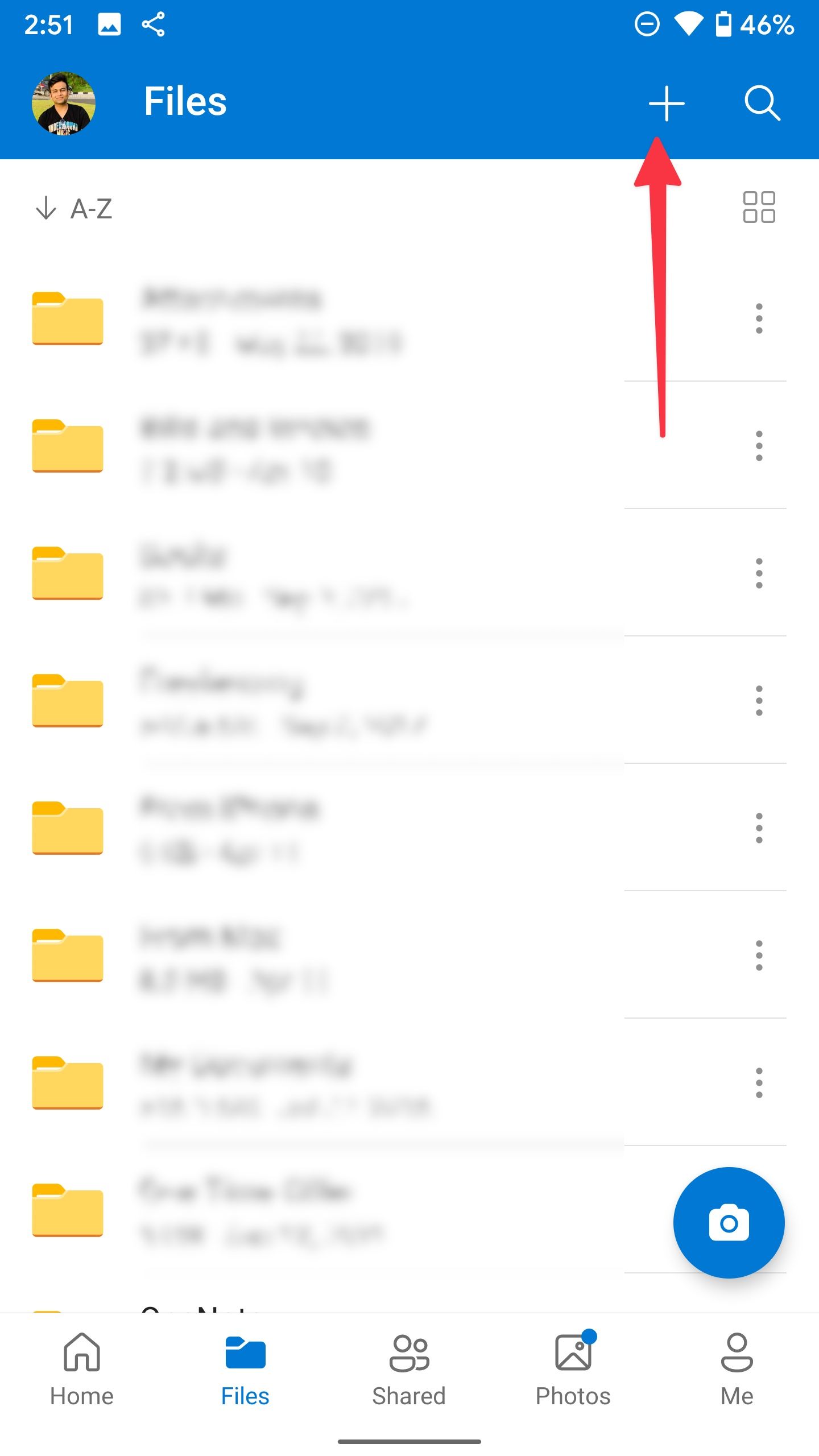
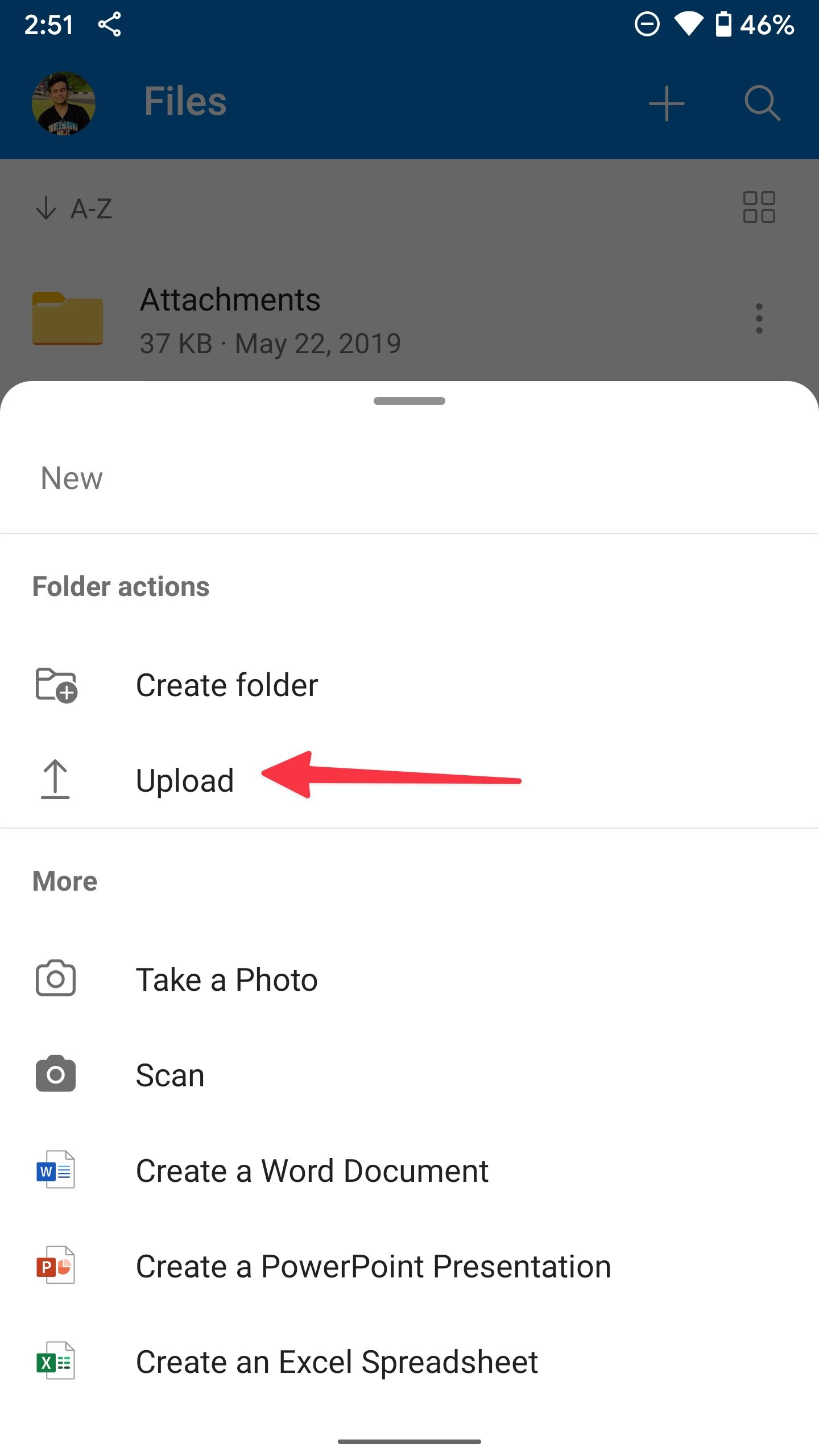
4. Open File Explorer (press Windows + E) on Windows and select your OneDrive account from the left sidebar.
5. Your uploaded files are ready to use on the desktop.
Mac users can download OneDrive for macOS or access the same via the OneDrive web app.
Snapdrop is another option that works on Windows and Mac
Snapdrop is an easy-to-use local file-sharing solution to transfer files from Android to Windows or Mac.
1. Download Snapdrop on your Android phone.
2. Visit Snapdrop.net on your desktop.
3. Connect your Android phone and desktop to the same Wi-Fi connection.
4. Open the Snapdrop app, and your desktop appears.
5. Tap the Desktop icon and select the files you want to transfer.
6. transfers selected media files and documents from your Android phone to the desktop.
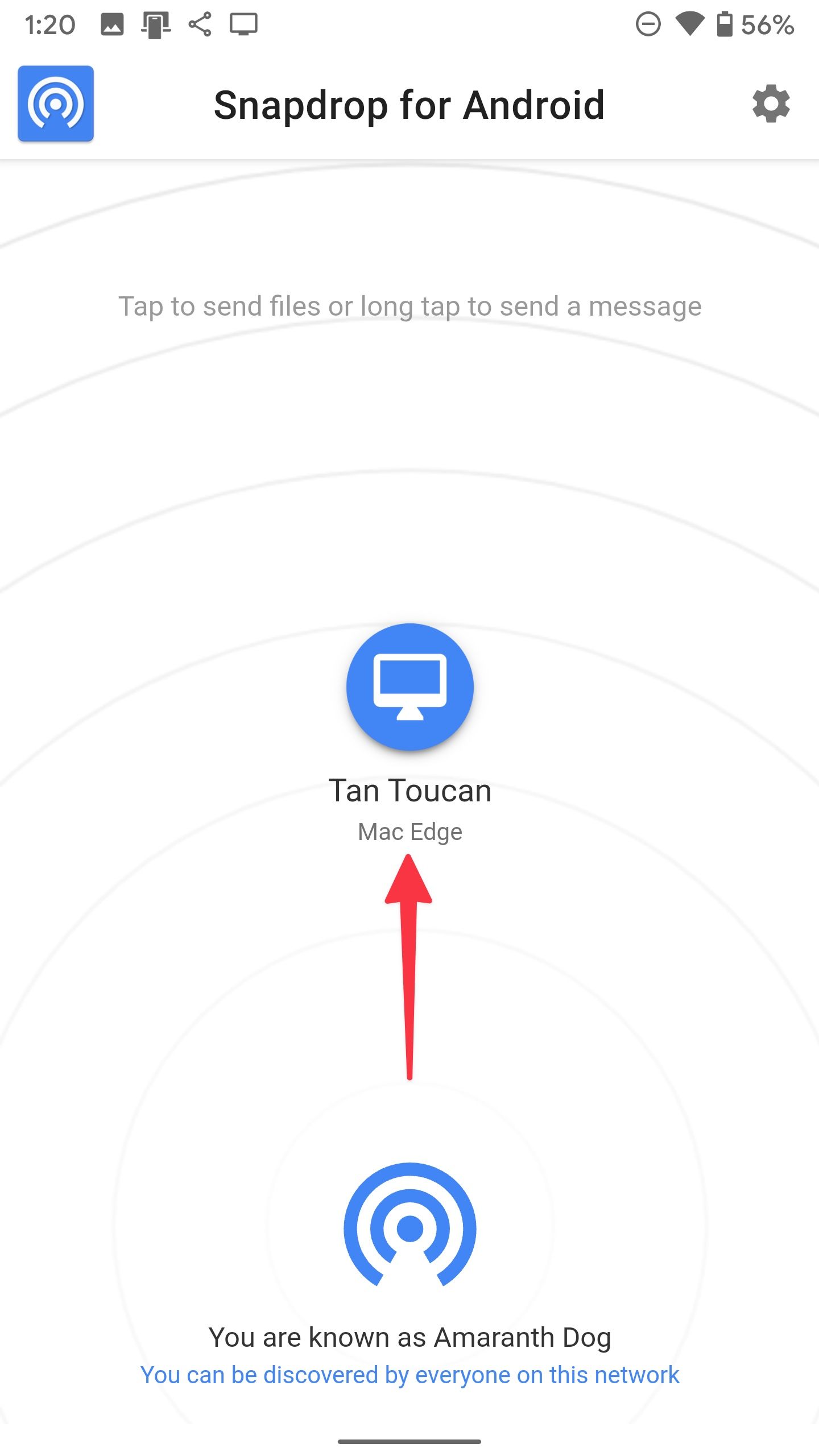
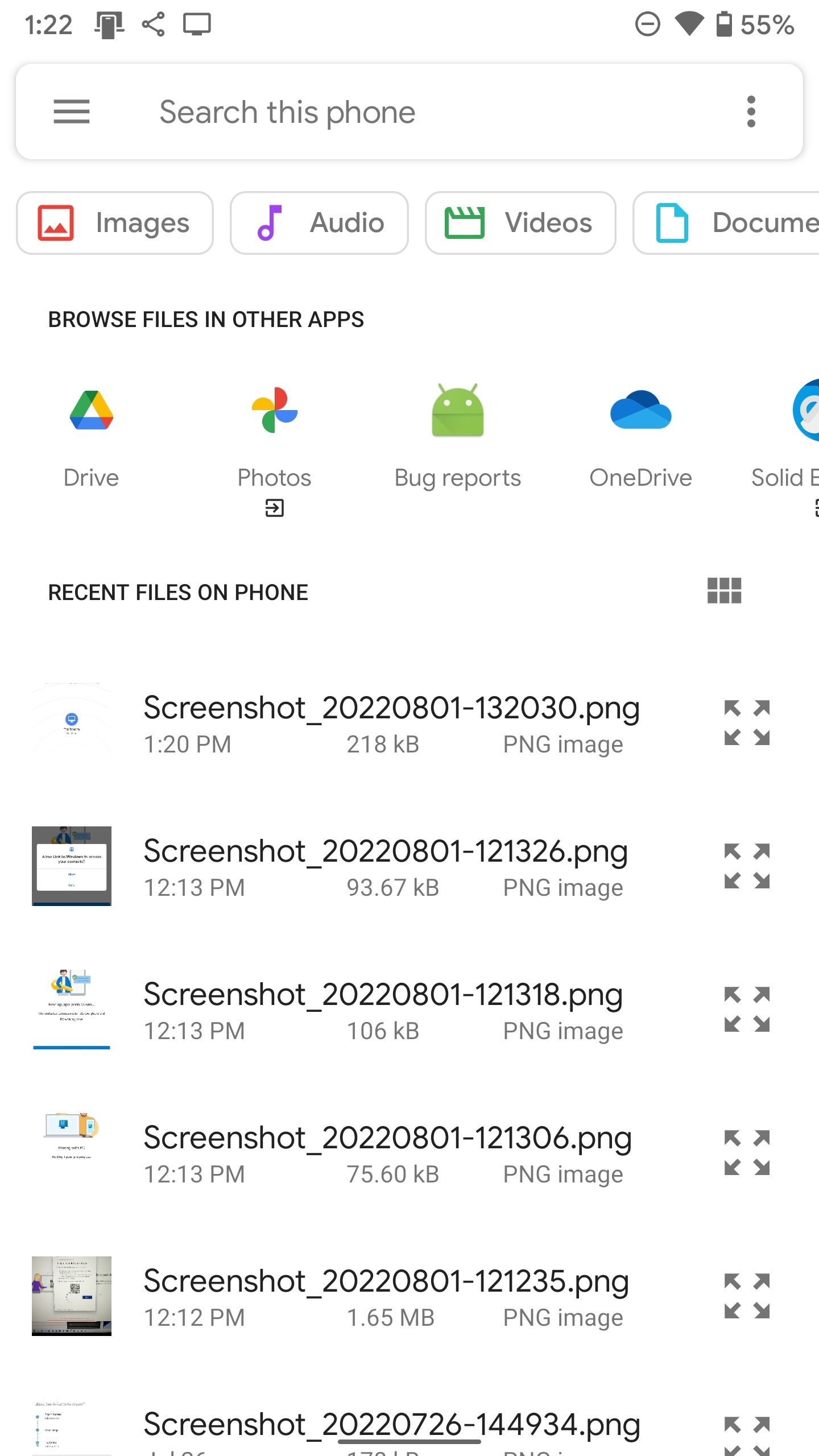
Go old school and transfer files with an FTP server
You can set up an FTP (File Transfer Protocol) server and move files from Android to Windows or Mac. We use the Solid Explorer app on Android as an example.
Set up an FTP server and move files to Windows
1. Download the Solid Explorer app on Android.
2. Tap the hamburger menu in the upper-left corner.
3. Select FTP Server.
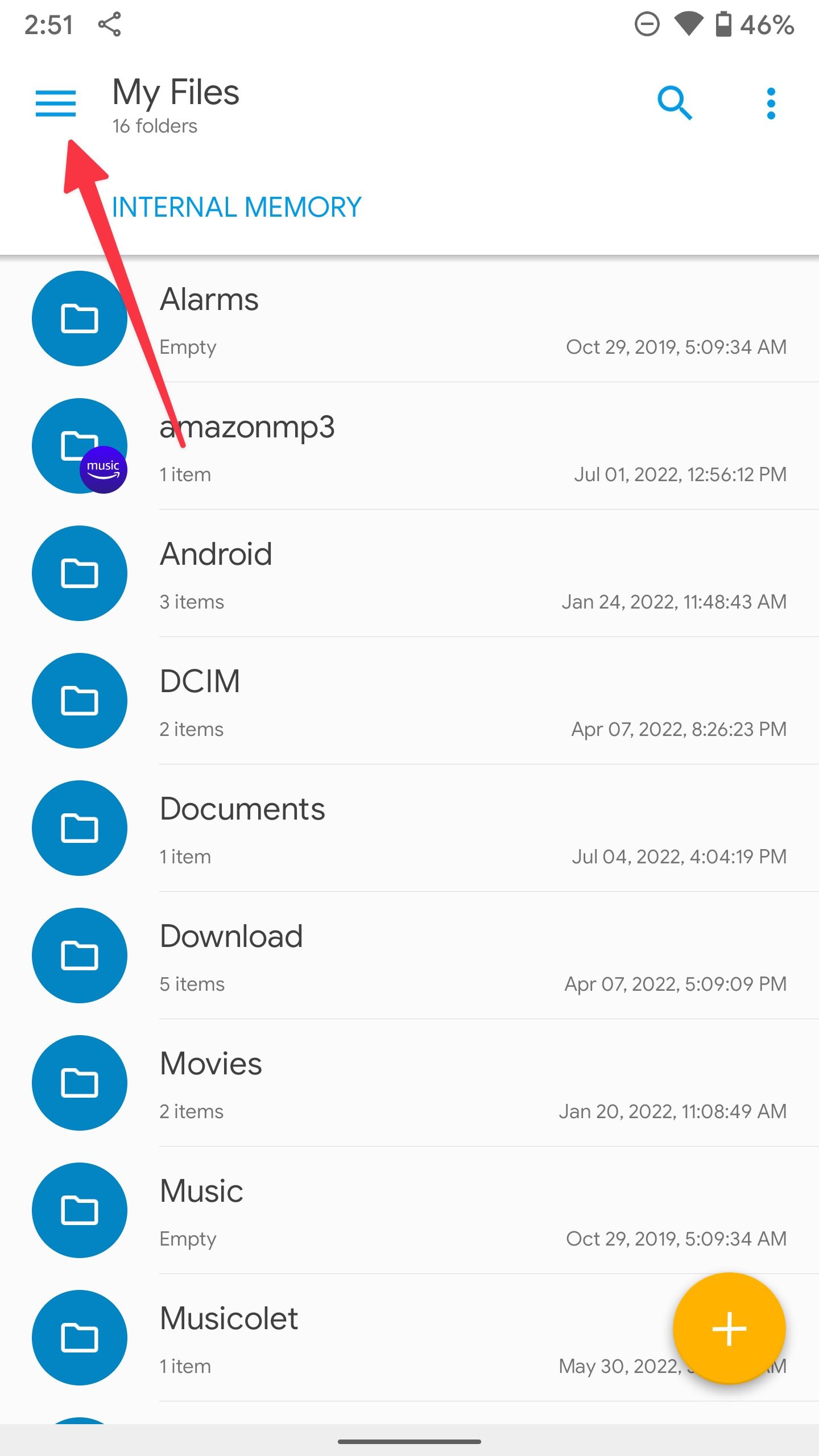
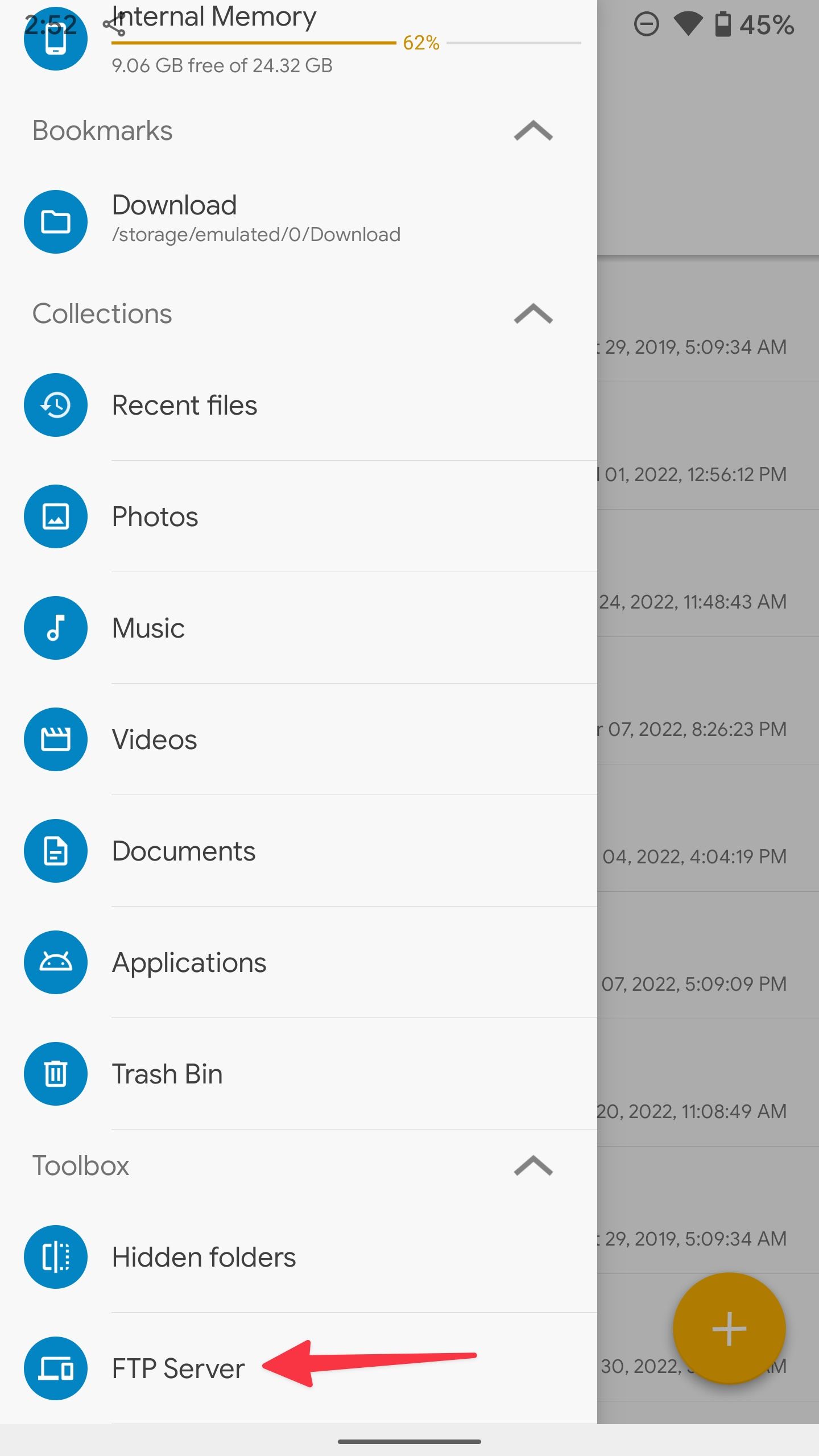
4. Make sure the server status is active. Make a note of the server address.
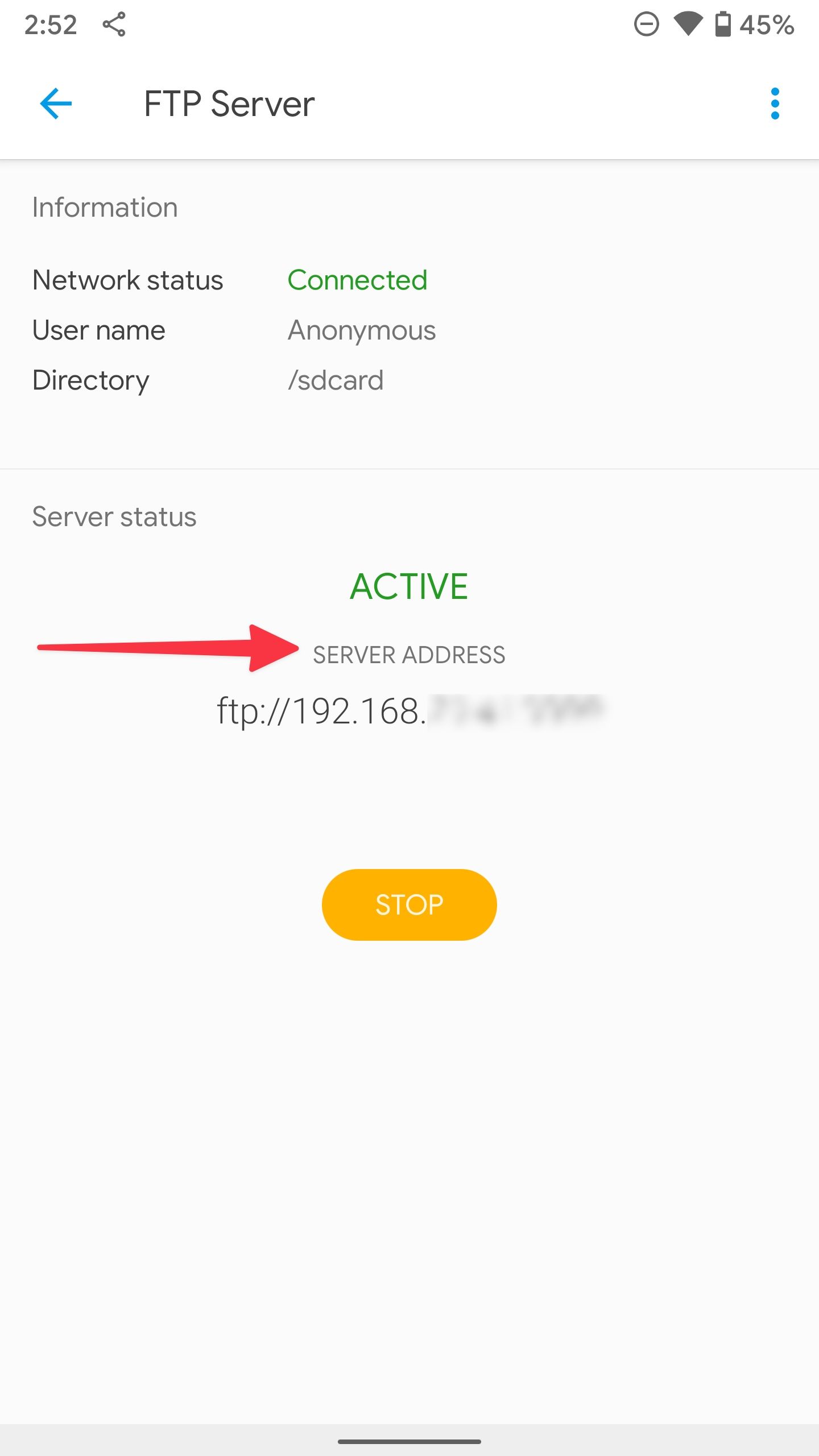
5. Launch File Explorer on Windows.
6. Type the server address in the address bar at the top. It should look like ftp://192.168.xx.xx:xxxx/. Then press Enter.
7. Check your phone folders on the desktop.
8. Copy or move files from Android folders to a relevant destination on Windows.
Set up an FTP server and move files to a Mac
1. Open Finder on Mac.
2. Select Go in the menu bar.
3. Select Connect to Server.
4. Type the server address (find it from the Solid Explorer app, as shown in the steps above) and click the Connect button.
5. Check your Android folders in the Finder menu. You can now move or copy them to your Mac.
Try the OpenMTP Android file transfer tool for Mac
OpenMTP is an advanced Android file transfer app for macOS. Follow the steps below to use OpenMTP to transfer files from Android to Mac.
1. Download OpenMTP on your Mac from the official website.
2. Launch OpenMTP on your Mac.
3. Connect your Android phone to your Mac using a data cable.
4. Open USB Preferences from the Notification Center. Select the radio button beside File transfer / Android Auto.

5. Check your Android phone storage with the folders that appear in the OpenMTP app.
6. Drag and drop files from the phone folder to the Mac storage and complete the transfer process.
Google Photos is an easy choice for photos and videos
Google Photos is ideal for transferring images and videos from your Android phone to a PC or Mac. You must turn on Google Photos backup on your phone and download the same using Google Photos web on the desktop.
1. Open Google Photos on your Android phone.
2. Tap your account picture in the upper-right corner.
3. Select Turn on backup (you must have sufficient Google Drive storage to upload media).
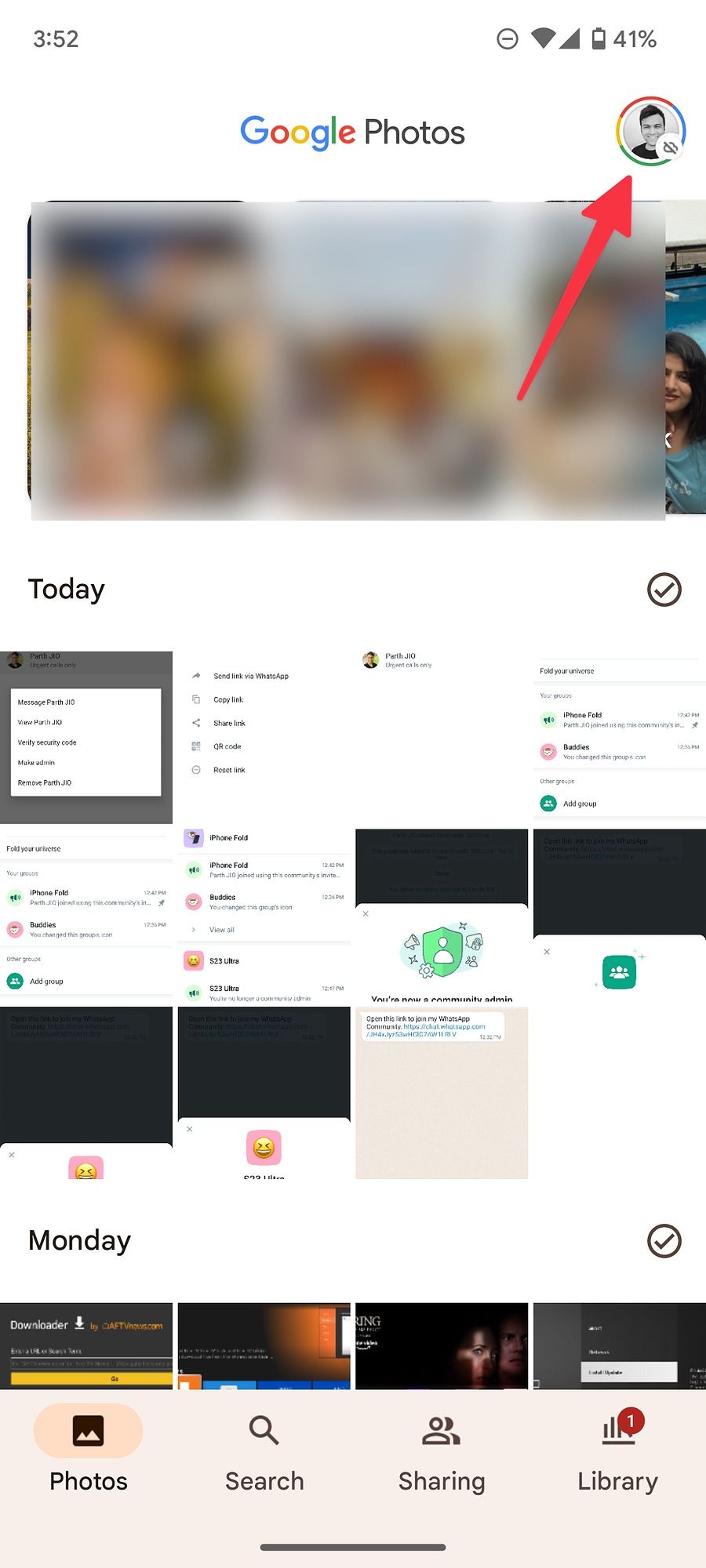
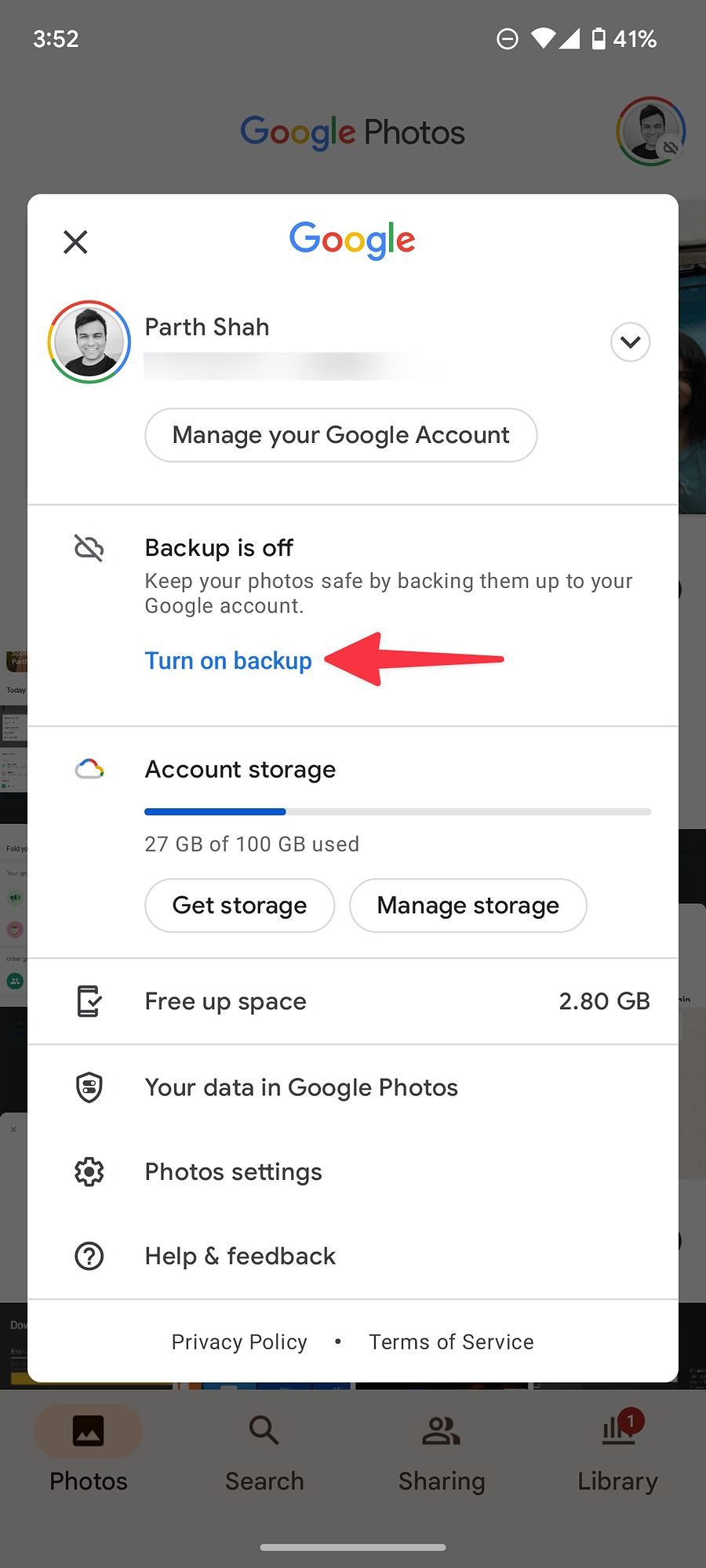
4. After uploading media from your phone, go to Google Photos web on your desktop.
5. Select the photos and videos you want to download on your computer and press the Shift + D keys.
6. Google Photos downloads a ZIP file that you can extract from the Finder (Mac) or File Explorer (Windows) app.
When you get the hang of Google Photos, read our top tips and tricks to use it like a pro.
Commander One is an excellent option for large file transfers
Commander One is a feature-rich alternative to the Finder app on Mac. If you want to manage thousands of files like a pro, the default Finder app may be limited in certain ways. You can get Commander One, which has a better dual-pane interface, more organization options, and an option to transfer files from your Android phone. Let's check it in action.
1. Download Commander One from the Mac App Store.
2. Open the app and grant it permission to access your Mac files. The app may ask you to turn on full disk permission from Mac Settings.
3. Connect your Android phone to a Mac via a cable.
4. Your Android phone appears at the top. Select it to check your phone's internal storage and folders.
5. Select your files and drag them to your Mac storage.
Commander One is free to download and use. You can purchase the PRO pack at $30 to unlock all features.
Dropbox is excellent for organizing file transfers
Cloud storage services like Dropbox offer a convenient way to transfer files from your Android phone to your Windows PC or Mac. Unlike most file transfer apps, you don't have to fiddle with settings to share files between devices. Dropbox offers 2GB of free storage, so this option works best for smaller files.
1. Download the Dropbox app on your Android device.
2. Click the + icon in the lower-right corner of the screen.
3. Select Send copy of files.
4. Select Continue.
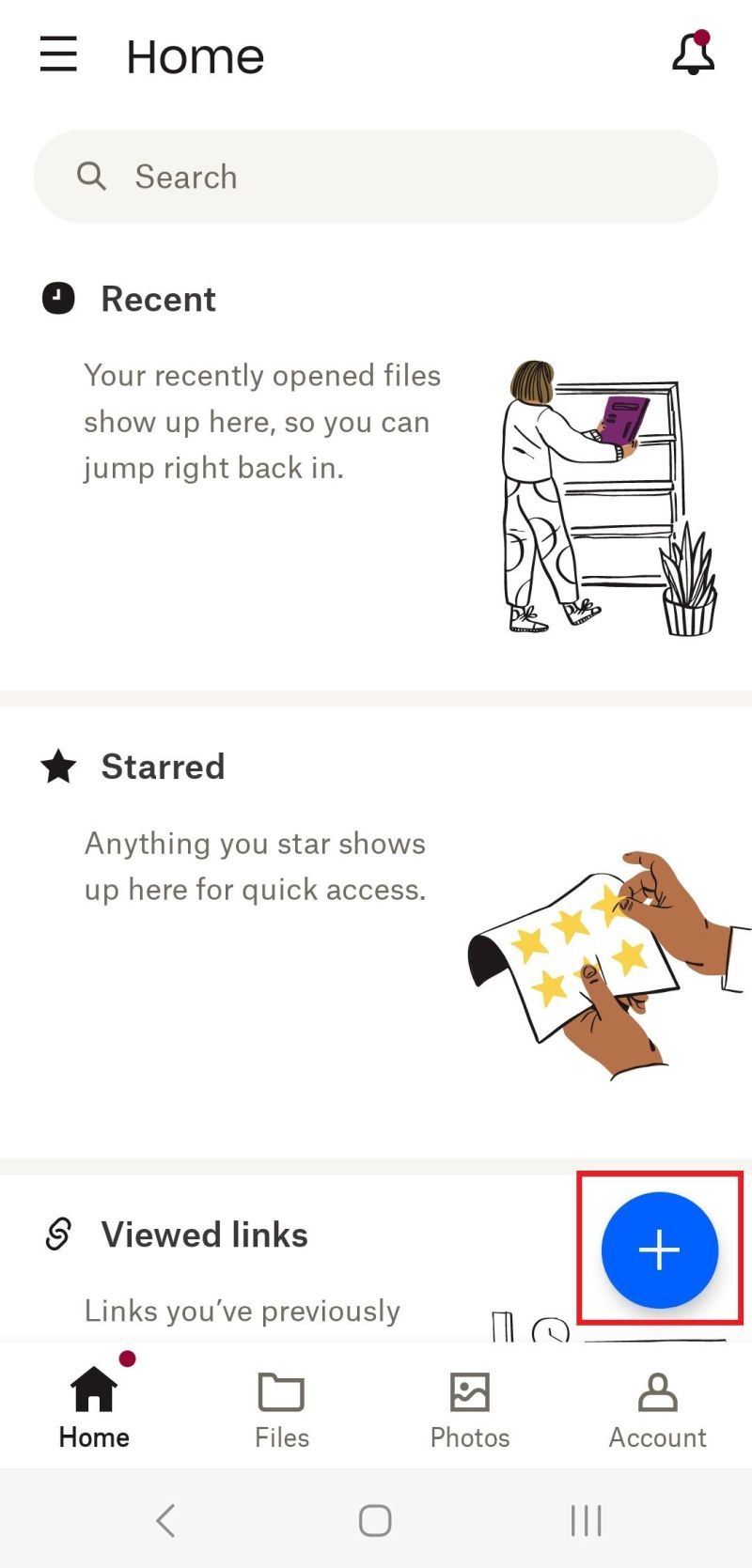
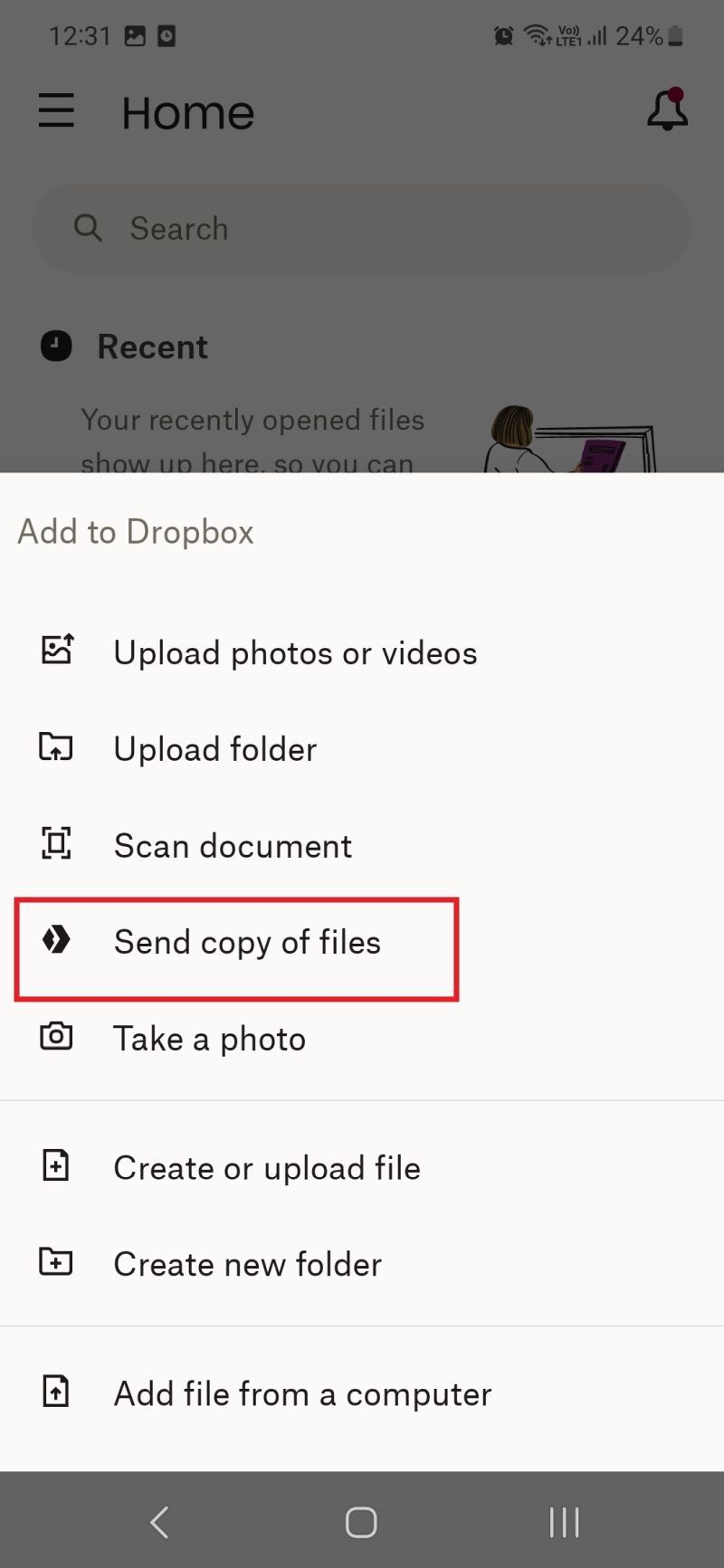
5. Choose the file or folders you want to share from the list and select Transfer [x] file(s).
6. Select Continue.
7. Rename your file, get download notifications, and set an expiration date. Select Continue.
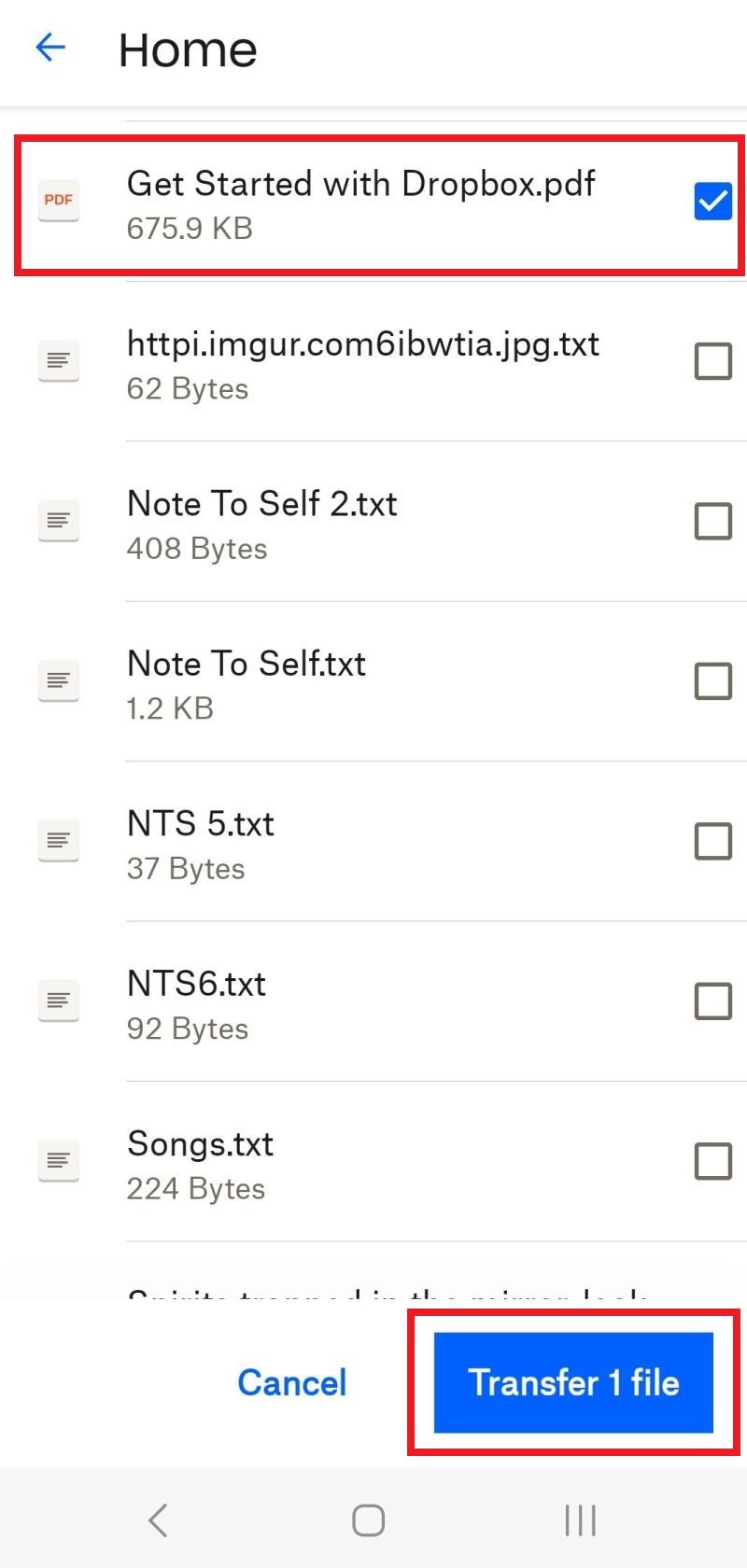
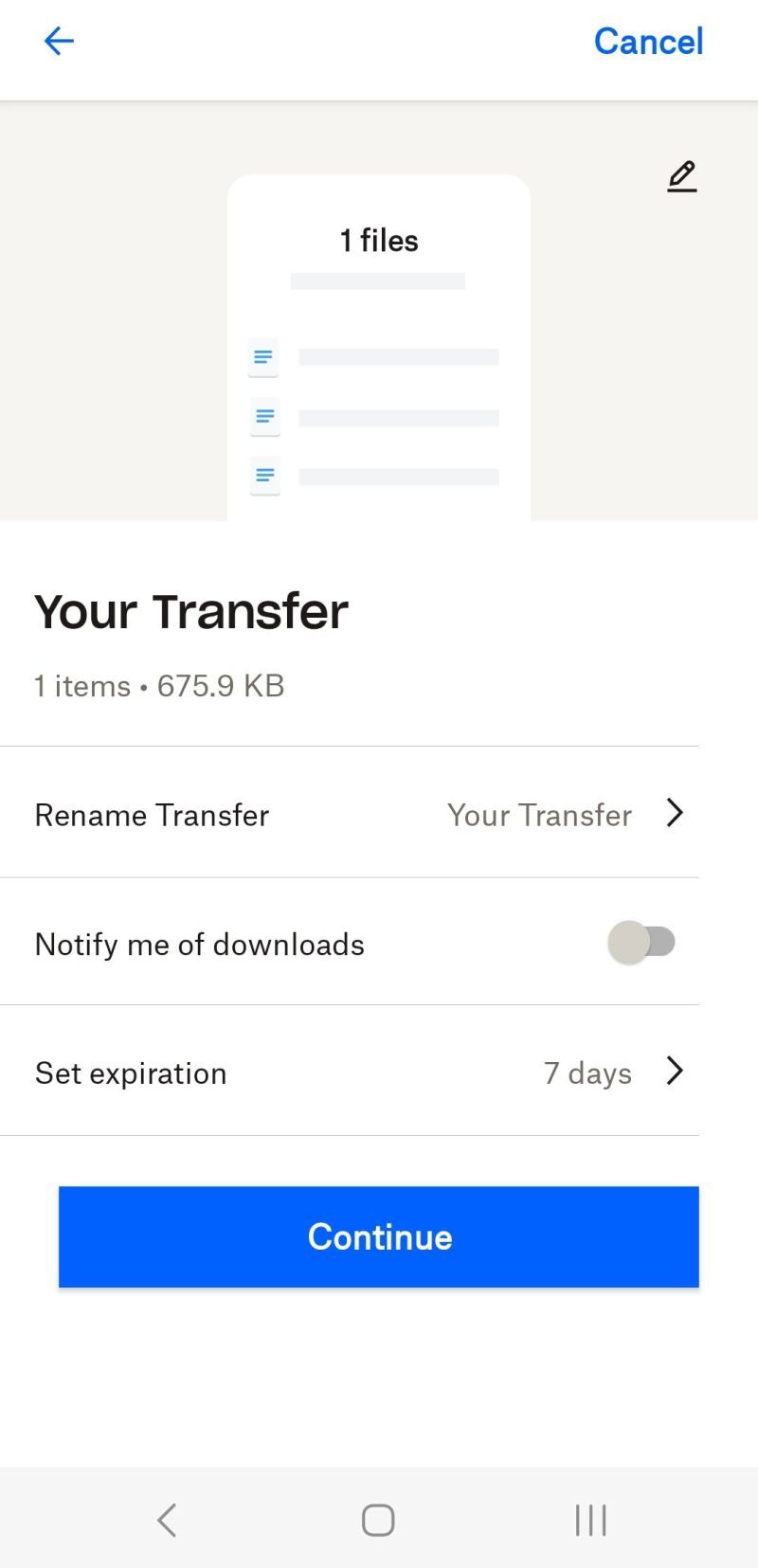
8. Select Copy link to share. The link is copied to the clipboard. You can share this link with anyone.
9. Select Done.
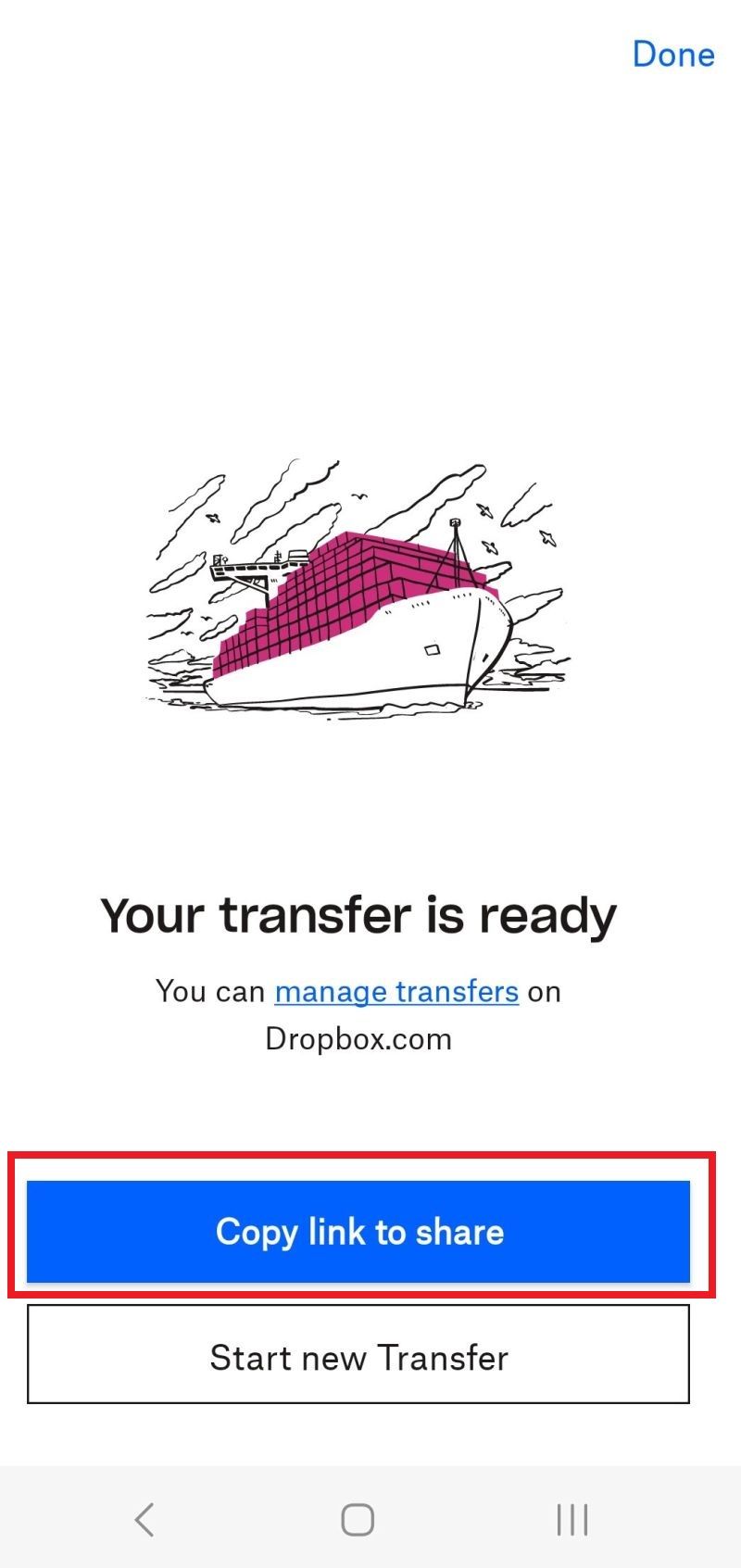
10. To view shared documents on your PC, go to the Dropbox website on your desktop browser and log in to your account.
AirDroid is a free file transfer app with lots of extras
AirDroid is a free file management app that lets you quickly transfer files from your Android phone to your Windows PC or Mac. Besides file sharing, the app offers features like screen mirroring, file management, phone notifications on a PC, and more.
1. Install AirDroid on your Android phone.
2. Sign in with your account.
3. Select AirDroid Web and choose Scan QR Code.
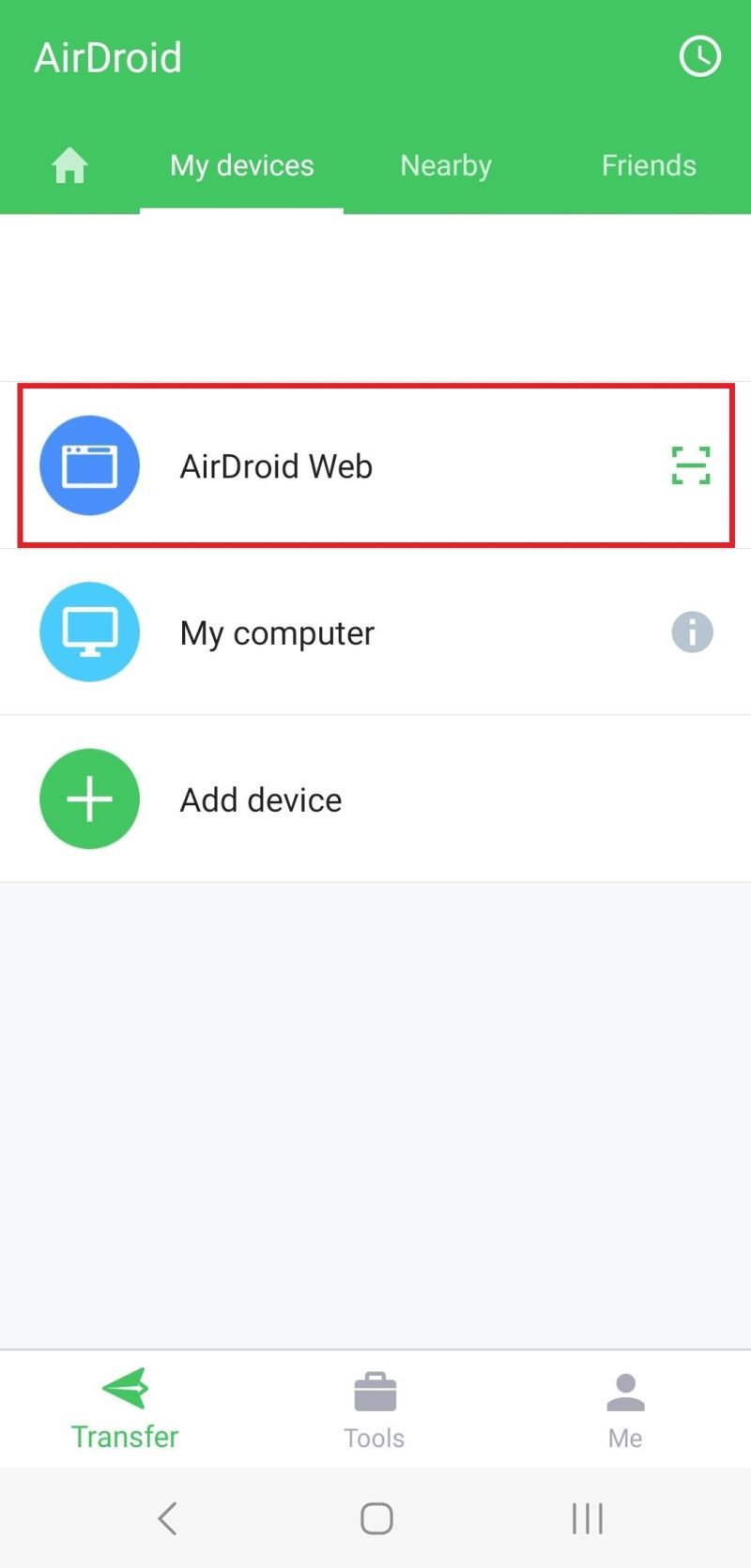
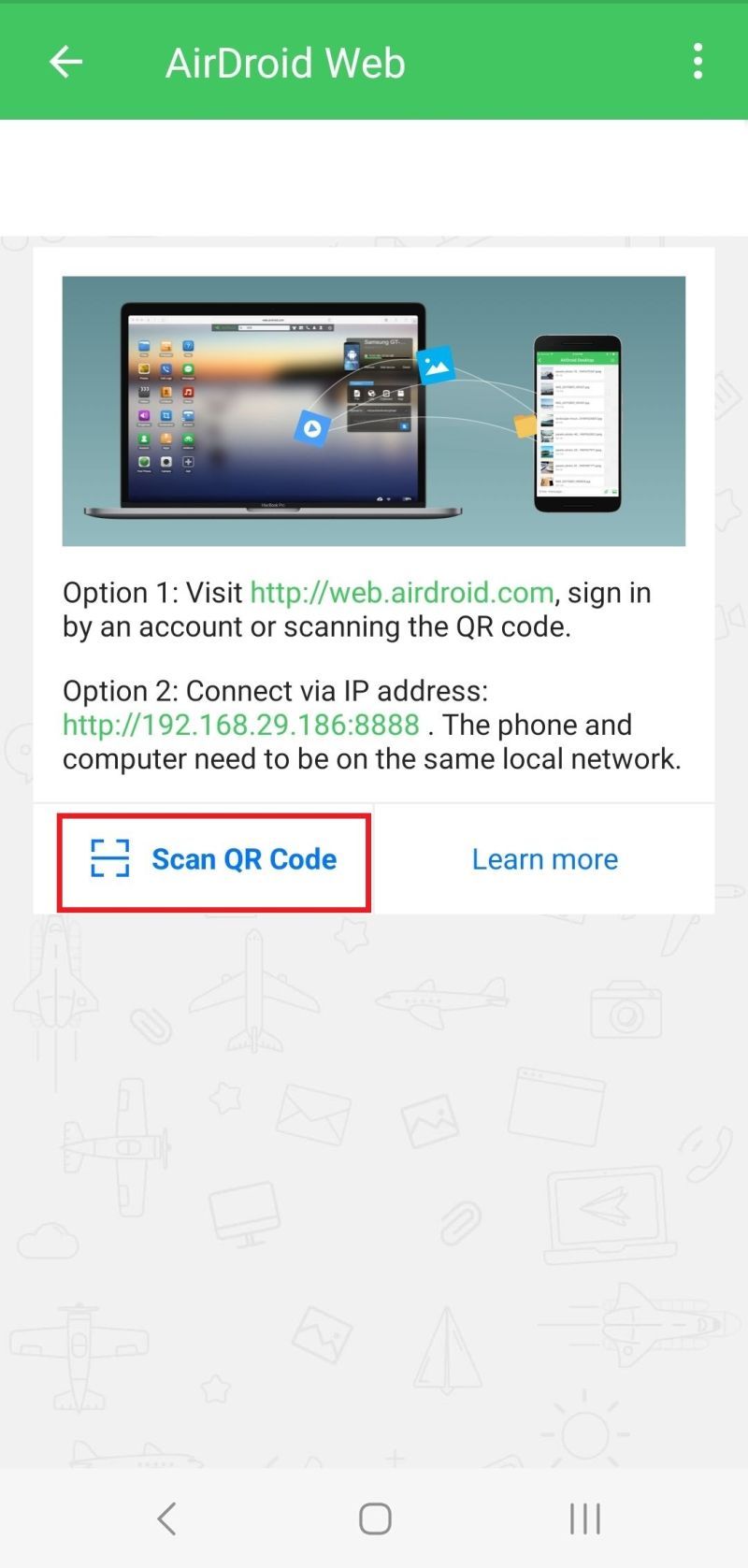
4. Open the AirDroid web app on your Windows PC or Mac.
5. Scan the QR code on the web app with your phone to link both devices.
6. Click Files in the web app to view your Android phone's files.
KDE Connect is easy if all your devices are on the same network
KDE Connect is one of the easiest file-sharing solutions to share files from your Android device to your Windows PC or Mac, with the caveat being that all devices must be connected to the same Wi-Fi network. It also lets you access your phone's clipboard, receive messages from your computer, turn your phone into a remote control, and more.
1. Install KDE Connect on your Android phone.
2. Go to the KDE Connect website on your Windows PC or Mac and install the app.
3. Launch KDE Connect on your Android device. You'll see the name of your computer under Available devices.
4. Select your computer and choose Request Pairing.
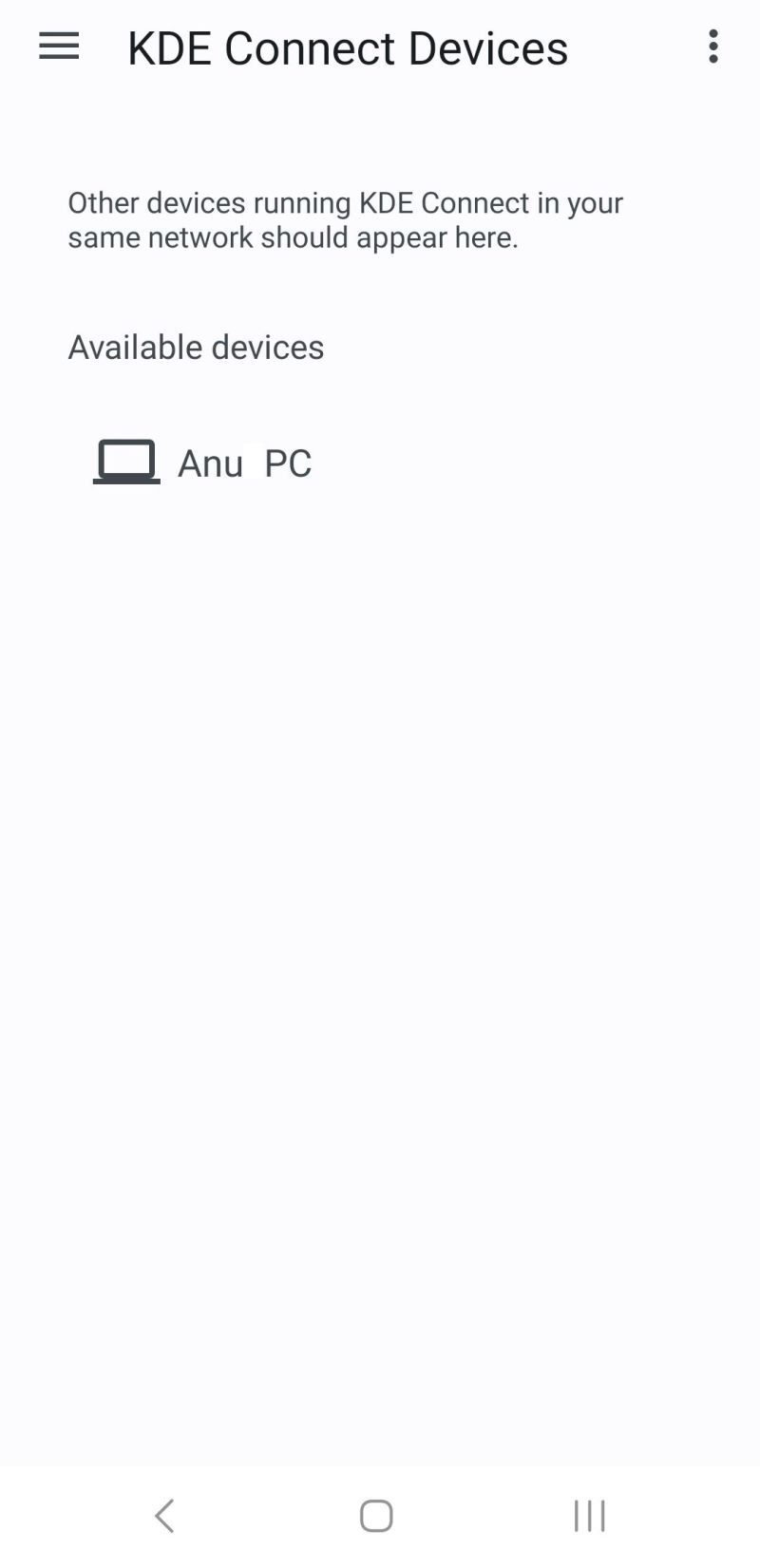
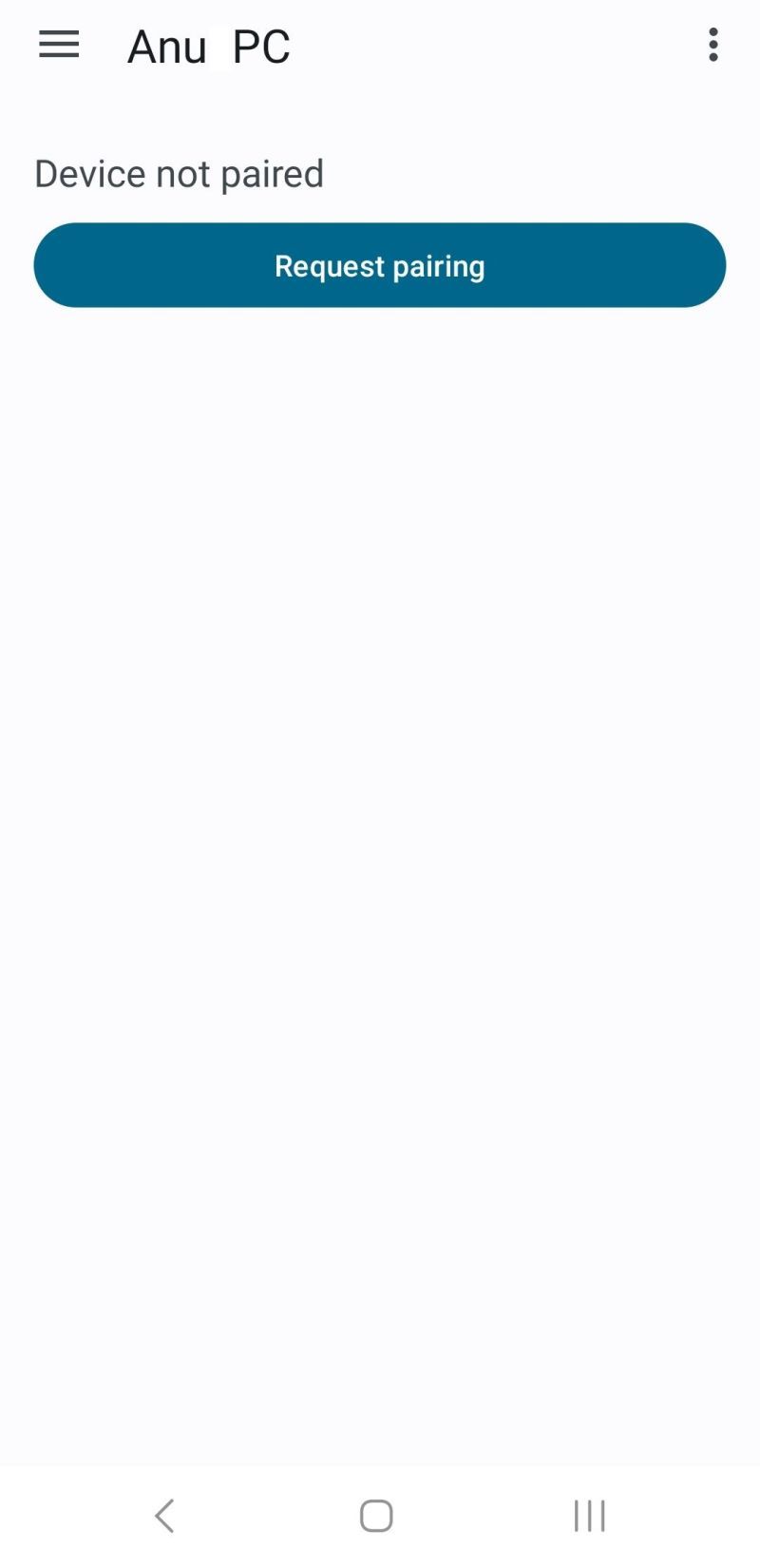
5. On your computer, click Accept when a notification for a pairing request pops up.
6. Select Send files from the KDE Connect app on your Android device and choose the file you want to share.
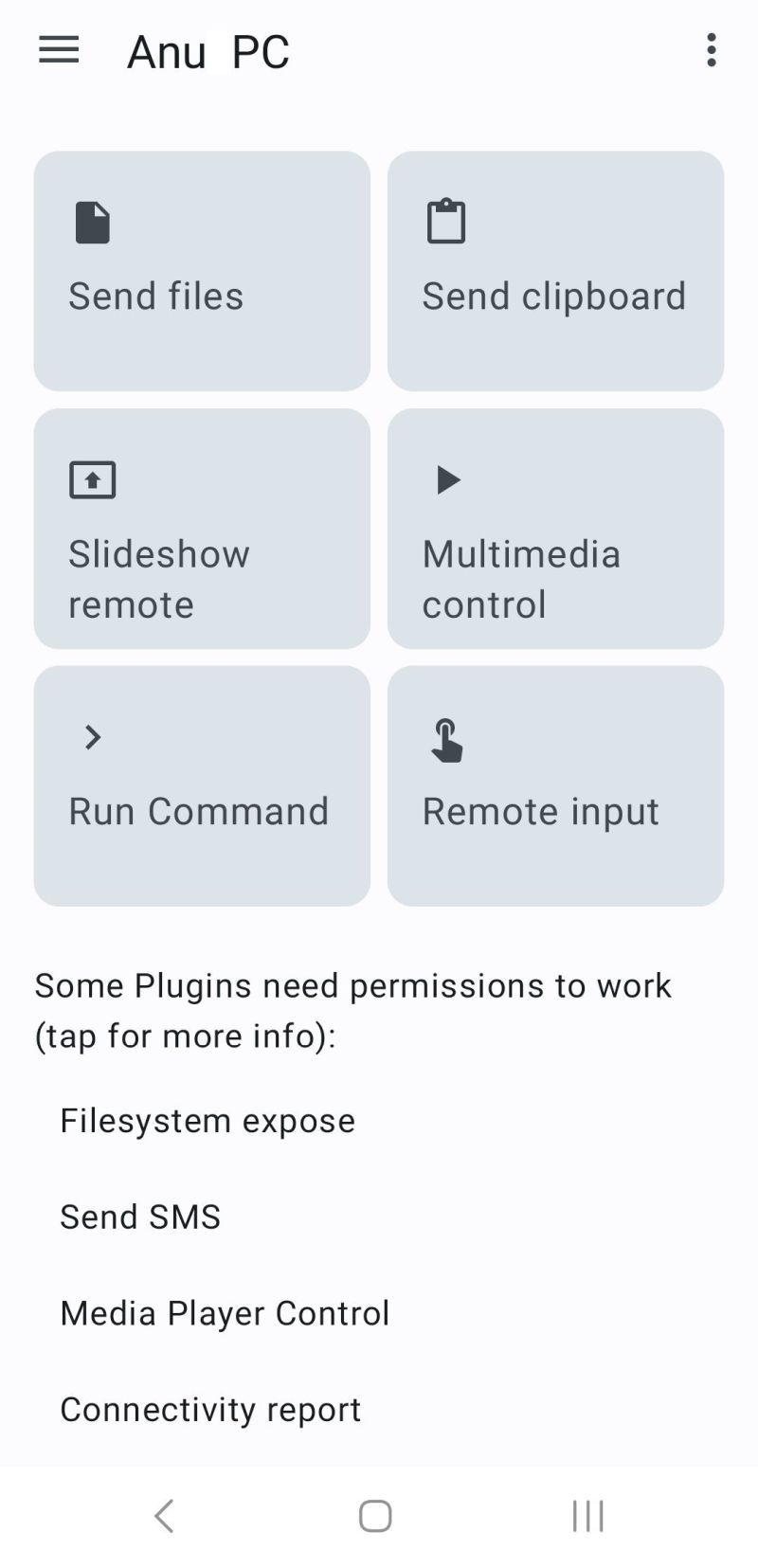
7. Go to your computer's Downloads folder to view the file.
Transfer your files in no time
These sixteen methods are the quickest and easiest ways to transfer files from an Android phone to your Windows or Mac computer. You can also clear the cache on Android to free up more space on your phone.

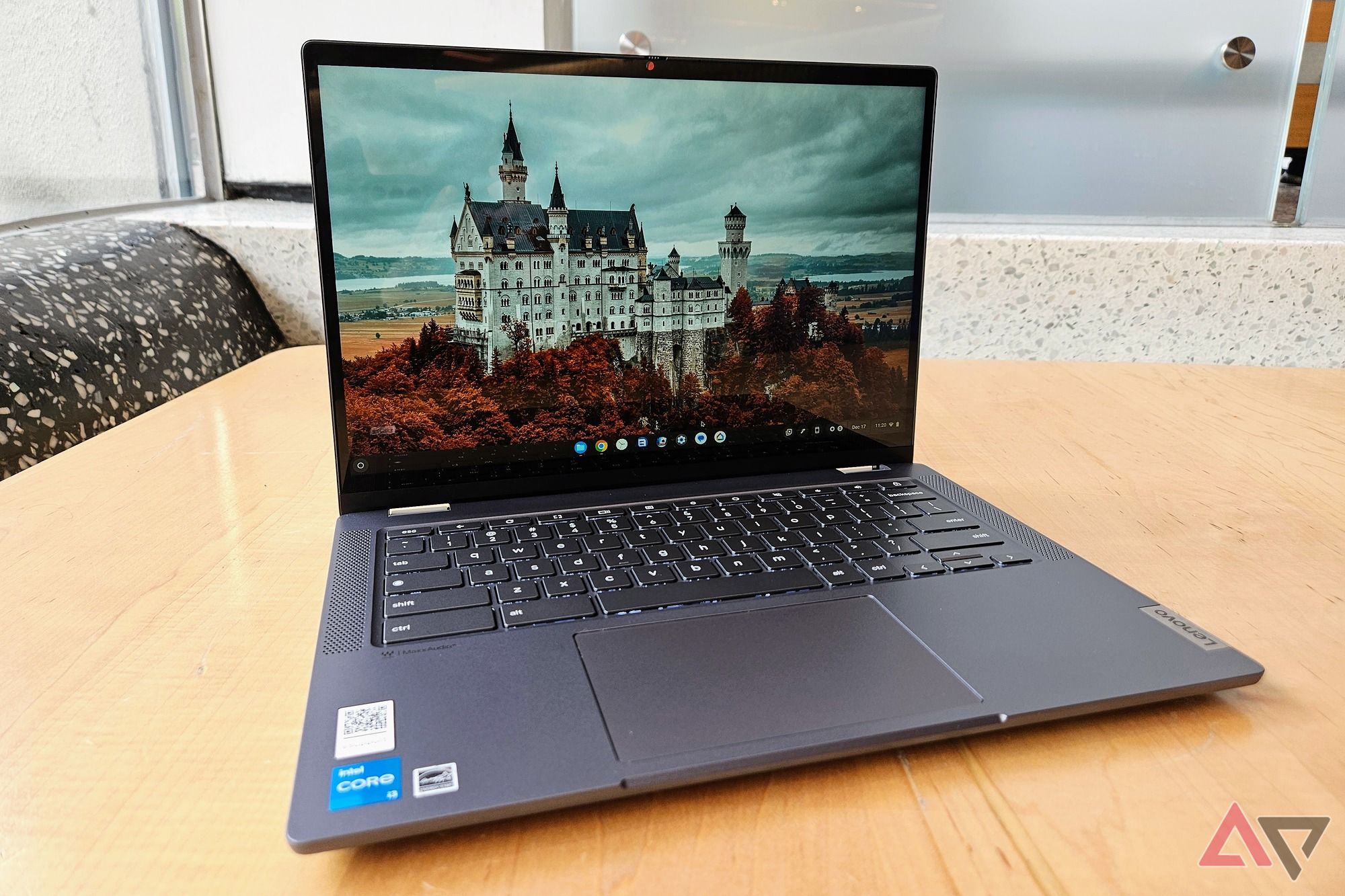

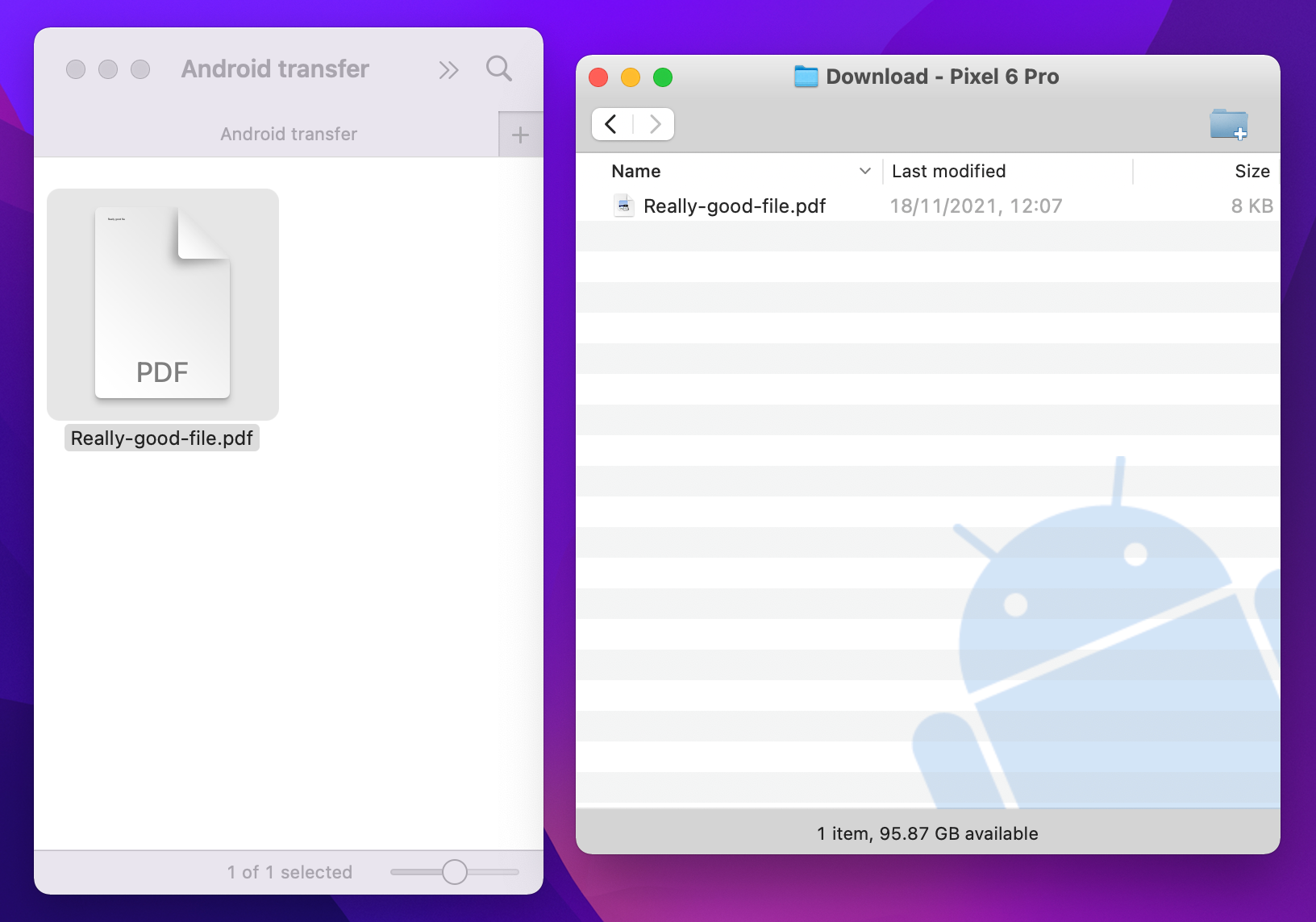
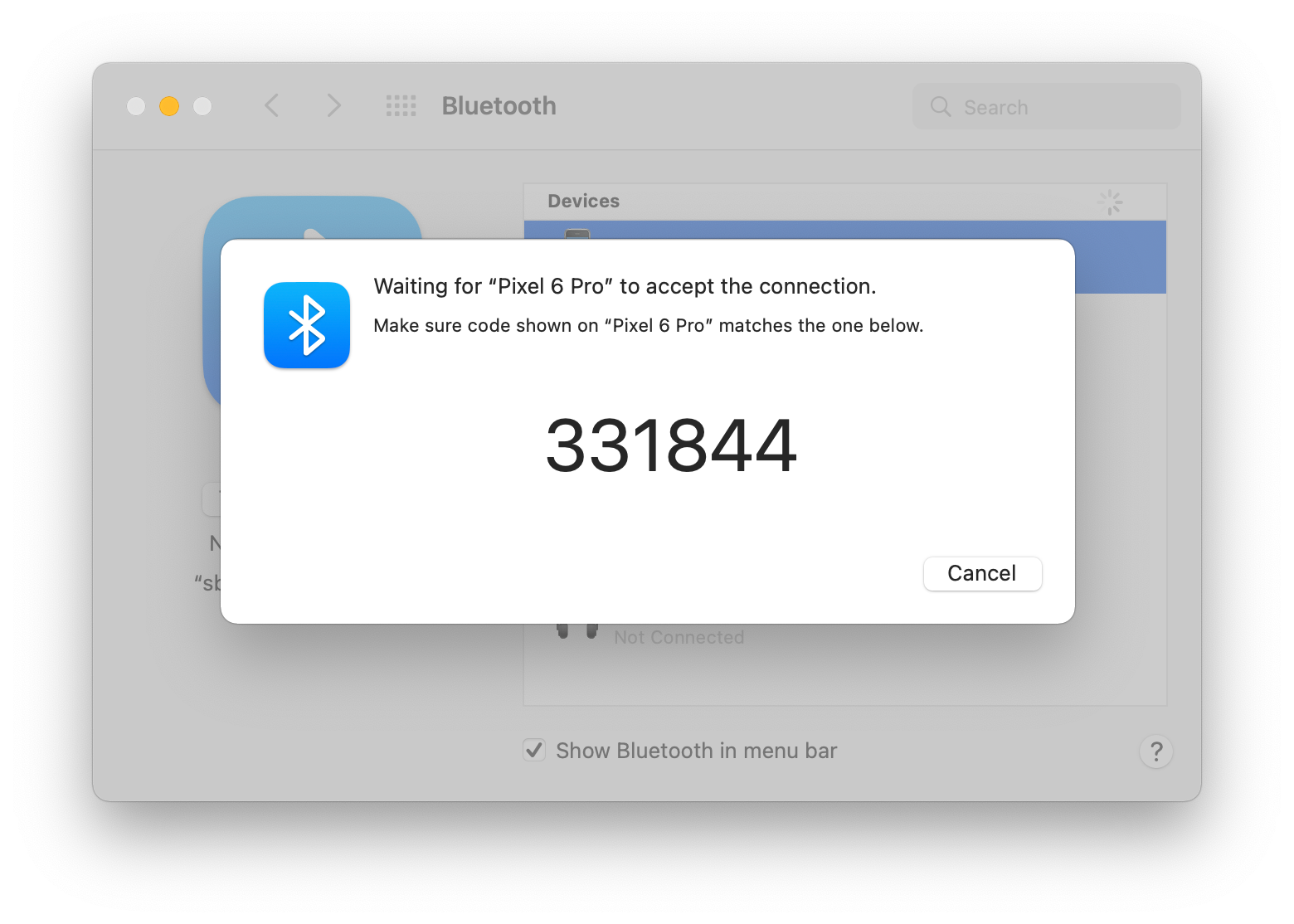
-1.png)
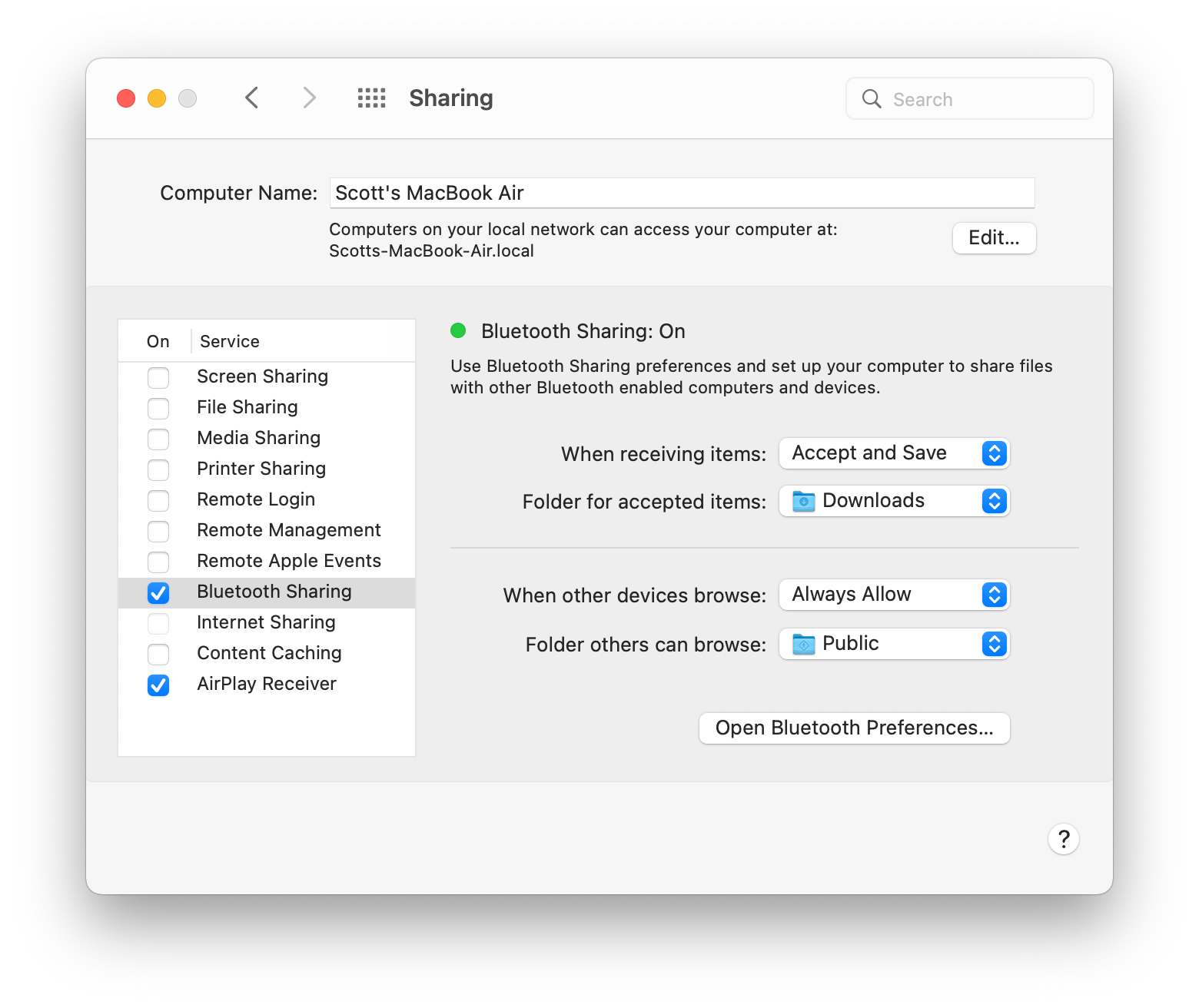
-1.png)
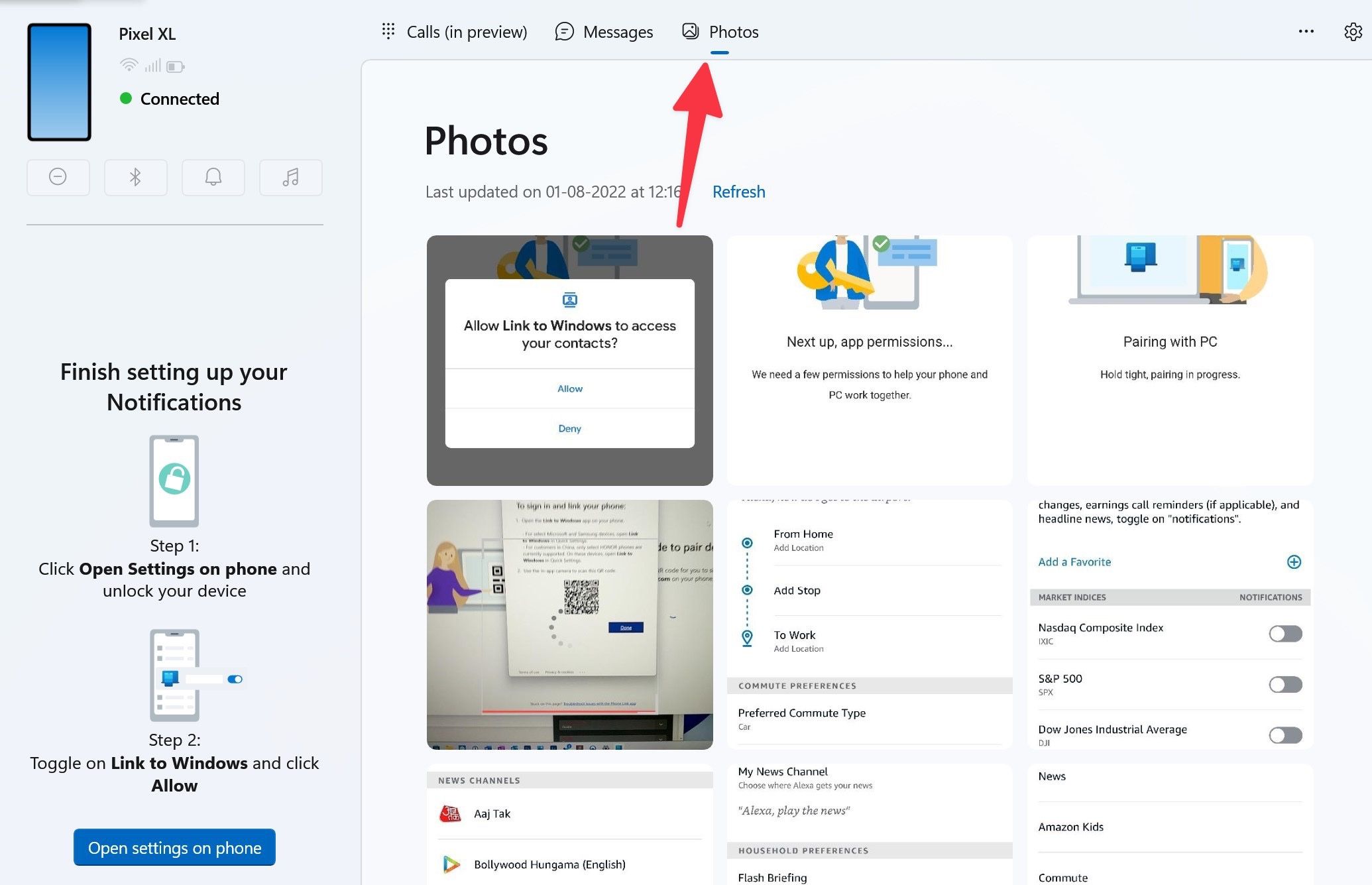
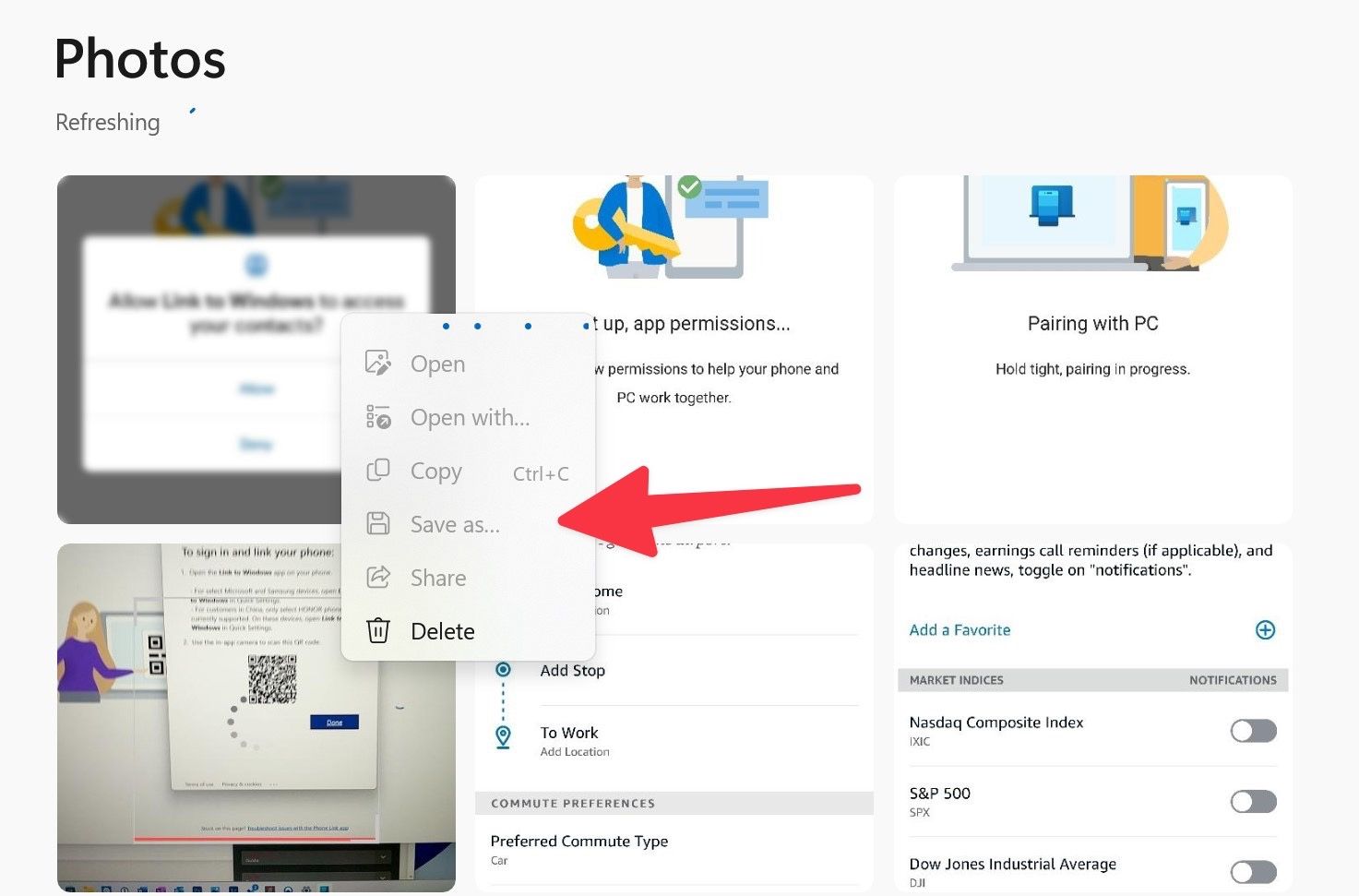
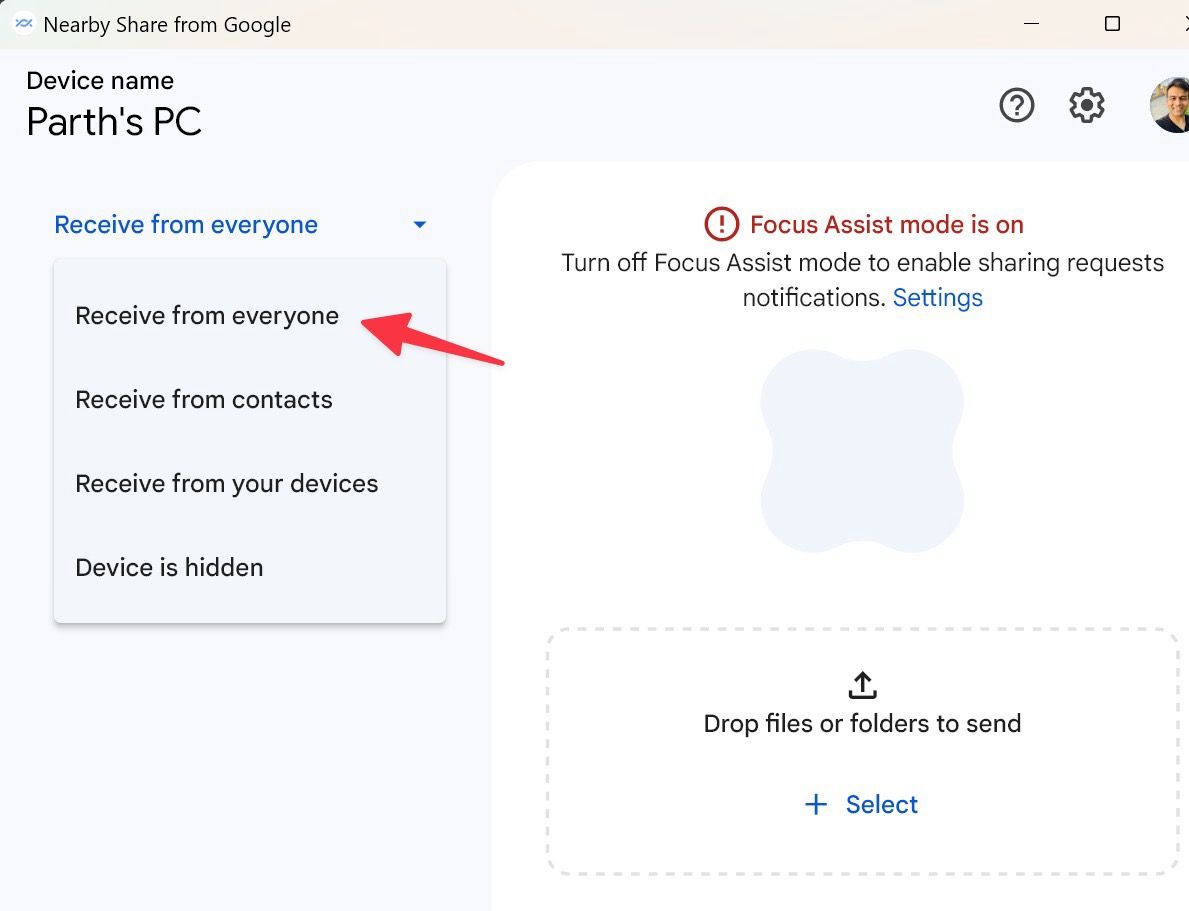
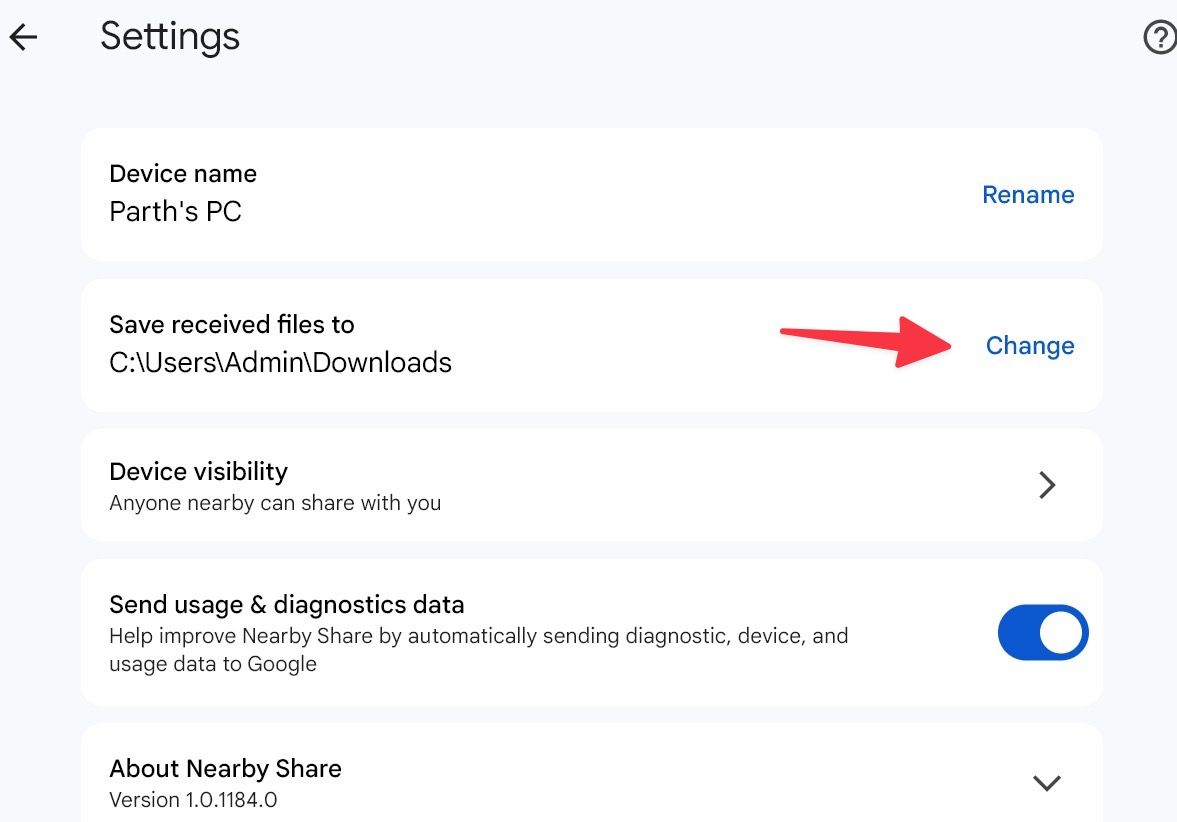
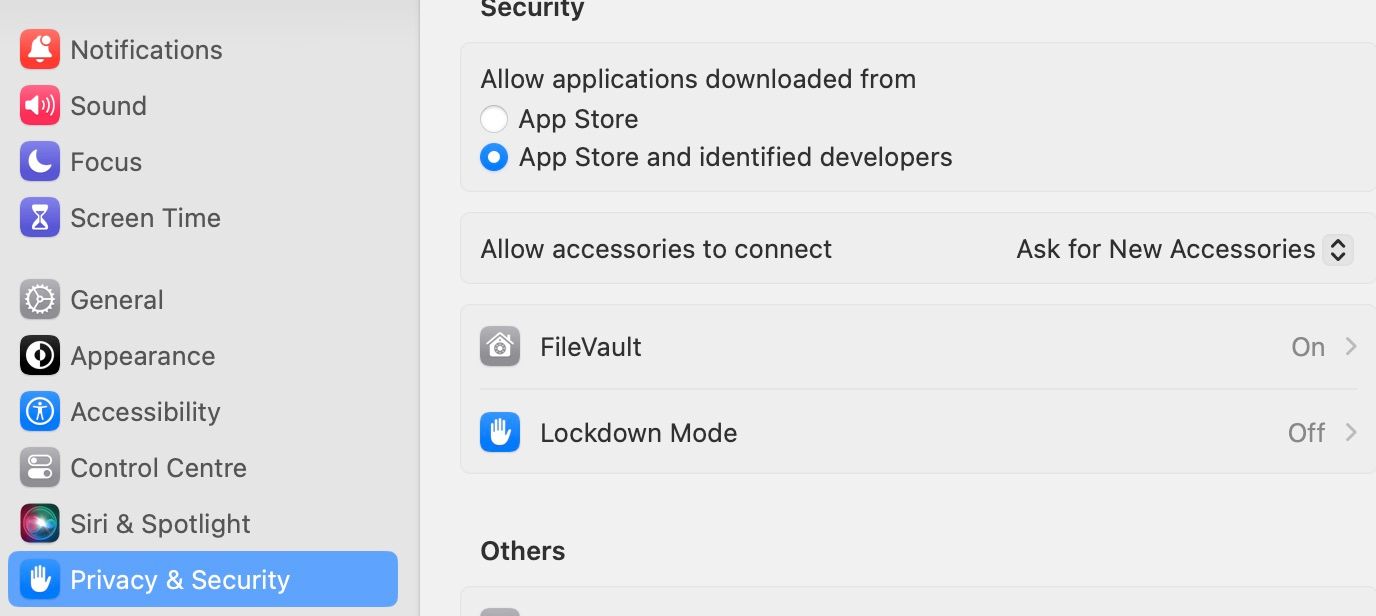
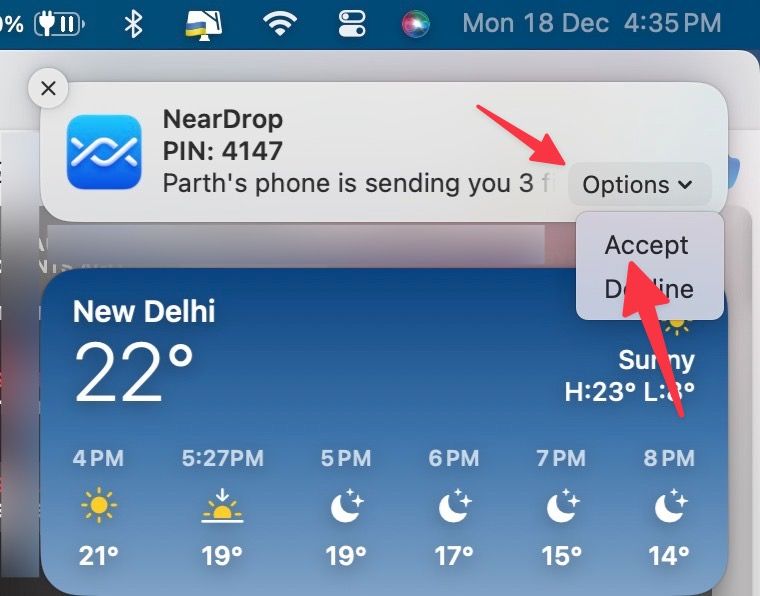
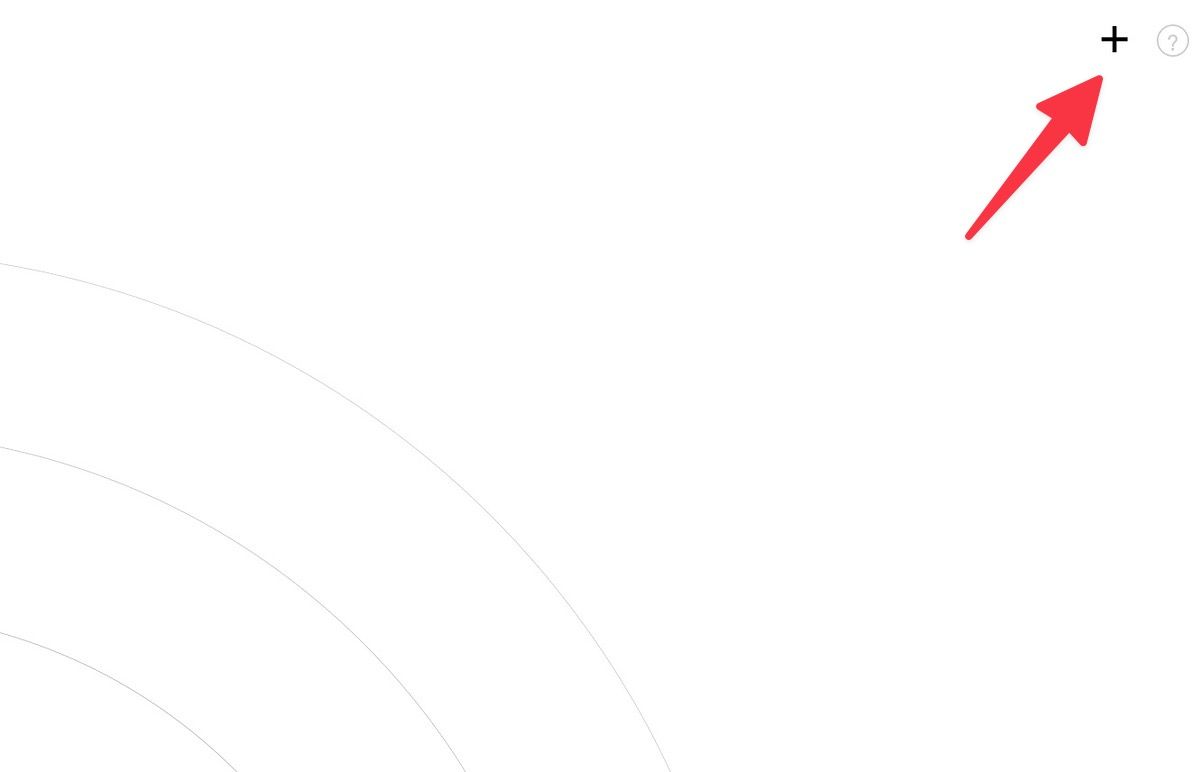
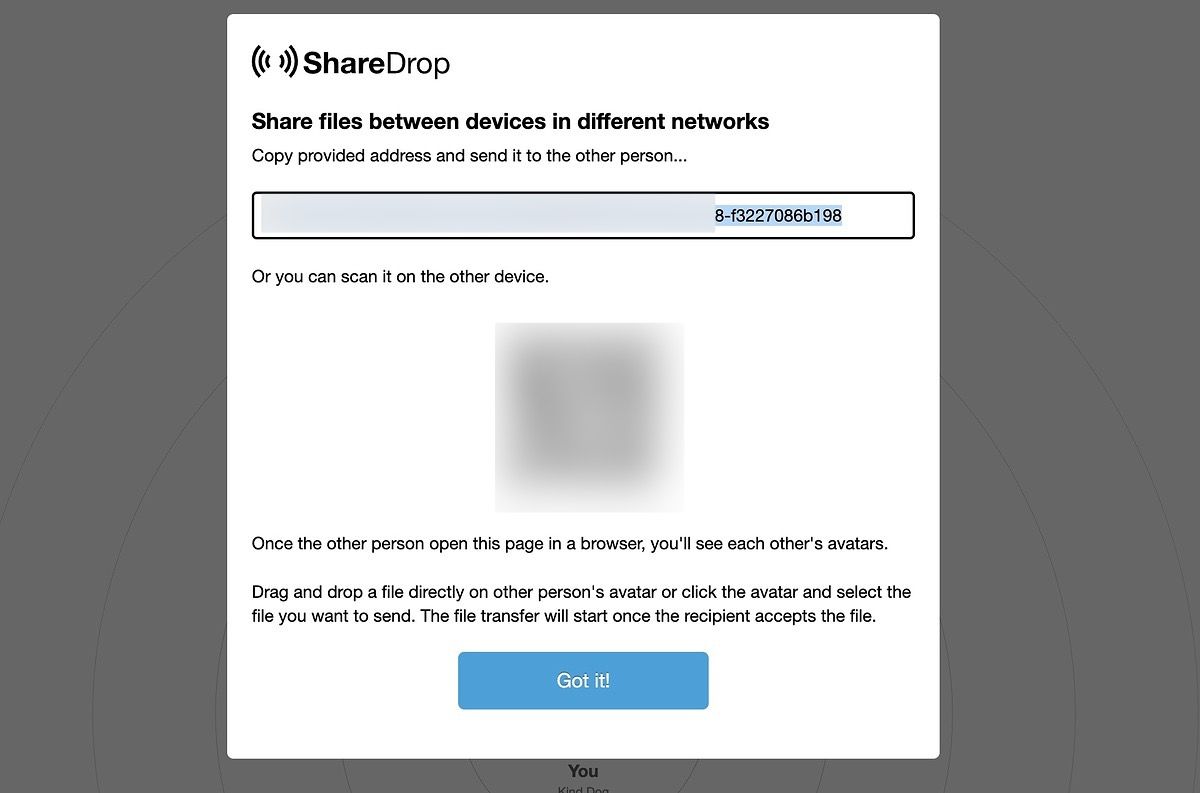
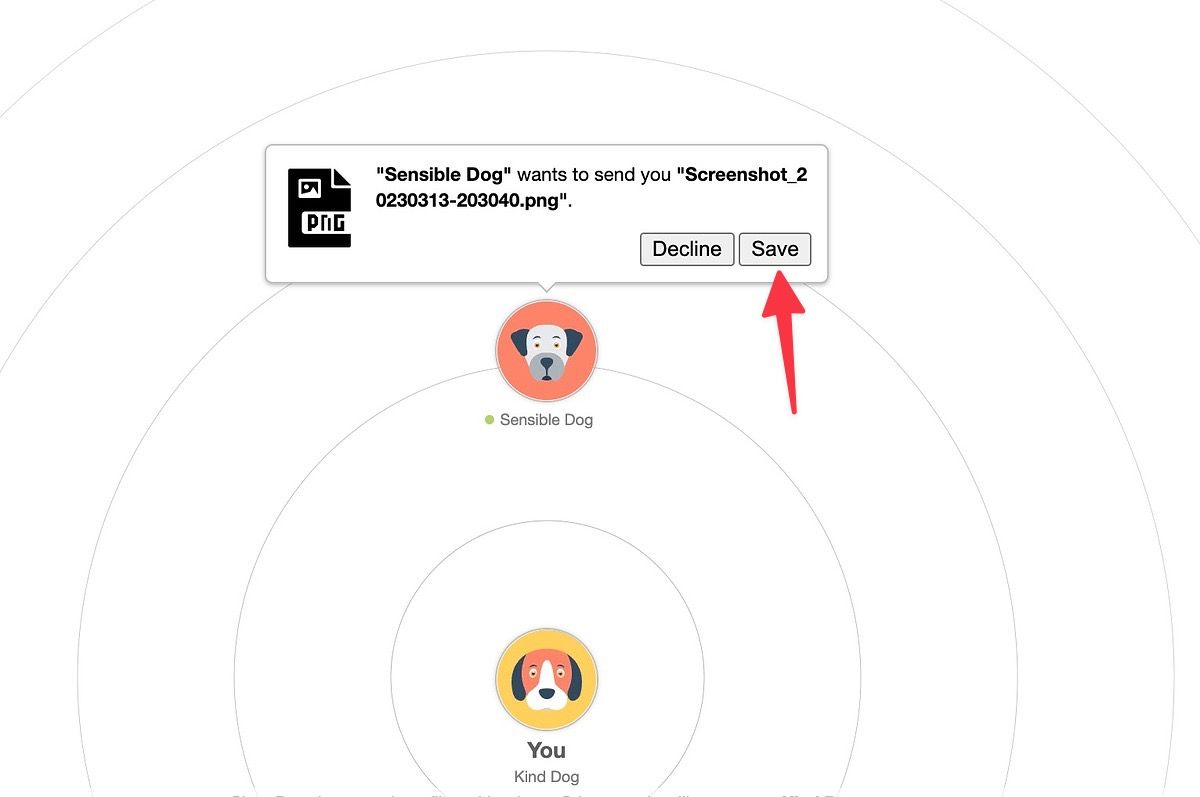
-1.png)
